Samsung offers two top models with 4K resolution when it comes to MiniLED technology. In this test, we took a closer look at the perhaps not so "high-end" QN95D, but rather the QN90D, which can also be found under the name QN92D. Samsung proudly calls its MiniLED televisions the NeoQLED series. It is precisely because of this technology that the television offers excellent contrast and high brightness, making movie watching an experience reminiscent of a true cinema. During everyday use, the Tizen system performed excellently. It is fast, intuitive, and allows seamless switching between applications. We also appreciated how well the television managed lower quality materials – traditional television and older films looked better than we expected, and the advanced image processing algorithms did their job. This is a television that truly enhances the reception of content that is not always in high resolution. The solar remote was a pleasant surprise for us. Although minimalist and with a limited number of buttons, it proved to be very practical – allowing us to control not only the television but also other devices, such as the decoder (Canal+) and the soundbar. This meant we could reduce the number of remotes on the table, which immediately improved usability. Additionally, solar charging – a simple idea that eliminates the need for battery replacements and aligns with ecological trends. As for the picture in different conditions, the television performs well in both bright and dark rooms. High brightness and numerous dimming zones handle most content, although sometimes in contrasty scenes a halo effect is visible. The colours are vibrant and natural, and the QLED coating adds intensity to them. For even better results, we opted for calibration – after which the picture looked even more detailed and natural, which only reinforced our belief that the QN92/QN90 is an excellent choice. And what about motion on the screen? It is absolutely smooth. The 144 Hz panel performs excellently with dynamic scenes – fast actions, sports, games – everything looks natural and without blurring. We particularly appreciated the Auto Motion Plus Game feature, which makes games running at 30 frames per second look smoother, resembling 45 frames, and at 60 Hz, motion becomes even more natural, as if operating at 90 Hz. For gamers, this is a significant advantage, especially since low input lag and features like game bar further enhance the gaming experience. This is a television that will perform well in any situation – from evening screenings to gaming marathons. The QN92D is a practical television, well-designed, and offering picture quality that is truly hard to ignore. An ideal choice for those looking for something more than just an ordinary screen for everyday content.
- Matching (Score)
- Our verdict
- TV appearance
- Where to buy
- Contrast and black detail
- HDR effect quality
- Factory color reproduction
- Color reproduction after calibration
- Smoothness of tonal transitions
- Image scaling and smoothness of tonal transitions
- Blur and motion smoothness
- Console compatibility and gaming features
- Input lag
- Compatibility with PC
- Viewing angles
- TV efficiency during daytime
- Details about the matrix
- TV features
- Apps
- Playing files from USB
- Sound
Samsung Neo QLED QN90D / QN92D vs Hisense U8Q
Direct compare
Neo QLED / QN92D / QN90D
U8Q

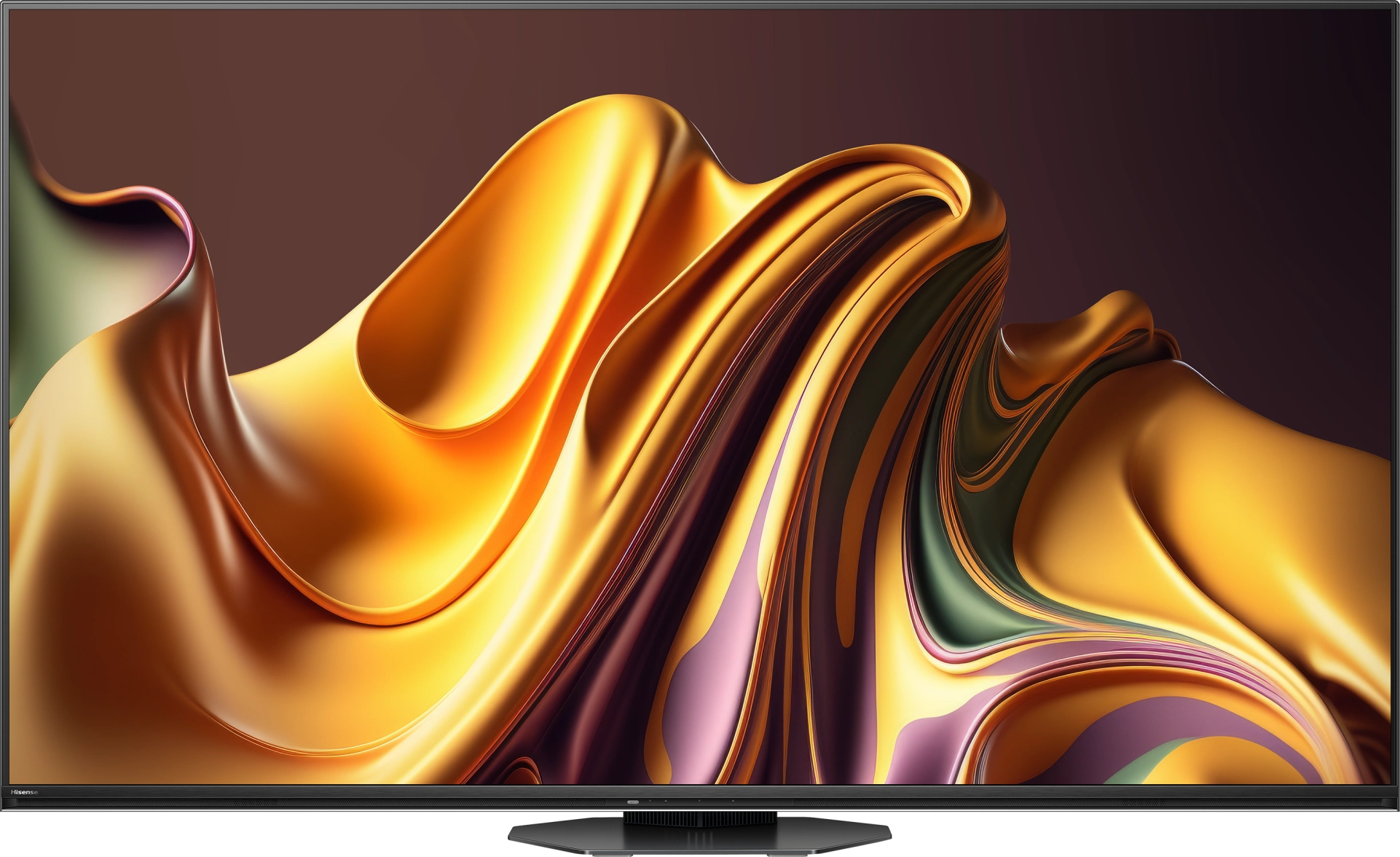
Panel type: LCD VA (wide viewing angle)
Resolution: 3840x2160
System: Tizen
Model year: 2024
Complete the survey to find out the result

Panel type: LCD VA
Resolution: 3840x2160
System: VIDAA
Model year: 2025
Complete the survey to find out the result

Overall rating
7.8
8.0
Movies and series in UHD quality
7.9
7.8
Classic TV, YouTube
7.9
7.6
Sports broadcasts (TV and apps)
7.7
7.2
Gaming on console
9.1
8.6
TV as a computer monitor
8.6
8.4
Watching in bright light
6.4
8.2
Utility functions
7.7
9.4
Apps
8.7
7.7
Sound quality
6.9
7.8
Complete the survey to find out what fits your preferences
Advantages
High brightness
Good contrast
Intuitive Tizen operating system
Great for gamers and sports fans (HDMI 2.1, 144Hz, low input lag)
Wide viewing angles - unusual for VA panels
Great blacks and contrast
Incredibly high brightness
Full HDR format package: HDR10, HDR10+, Dolby Vision
Good motion fluidity - 165Hz panel
Outstanding usability in difficult lighting conditions (High brightness + New anti-reflective coating on the panel)
Many features for gamers, VRR, ALLM, HDMI 2.1, 288Hz for PC
All 3 ports in HDMI 2.1 standard (Finally!)
USB-C with video signal sending capability (Displayport)
Many features in the Vidaa system
Support for DTS and Dolby Atmos
Disadvantages
No recording function
No DTS format support - this may be problematic for those using Blu-ray
Missing some applications in the Vidaa operating system
At maximum volume, the television shakes slightly
The television tends to "overexpose" the image in 4K HDR materials.
Our verdict
The Hisense U8Q is a television that makes it hard not to feel that the manufacturer approached the topic with the ambition of a top student. The picture is strong, vibrant and contrasting – as if it were shouting: “look, I can do more than most in this price range!” And indeed, there is some truth to this. The secret lies in the large number of dimming zones in Mini-LED technology. Thanks to this, HDR does not just come down to promises in the brochure, but can actually impress – especially during evening viewings. It's also hard to complain about motion fluidity. Watching matches and fast-paced games is enjoyable, and although the ball may sometimes leave a slight trace, for 99% of viewers this will be a detail of little importance in everyday watching. Gamers also have reasons to be pleased here – although it's worth mentioning the lack of HGiG functionality right away. Aside from that, however, it is really good: low input lag, three HDMI 2.1 ports and a full set of gaming features make the U8Q one of the more interesting Mini-LEDs for console fans. Of course, there are no perfect products. The television still carries some “mini-LED” remnants, and the Vidaa system – although full of features – can be less intuitive and has a more modest selection of apps than competing platforms. But are these serious drawbacks or rather minor jabs in the context of the price and what we actually get? We leave the answer to that question to you!
TV appearance





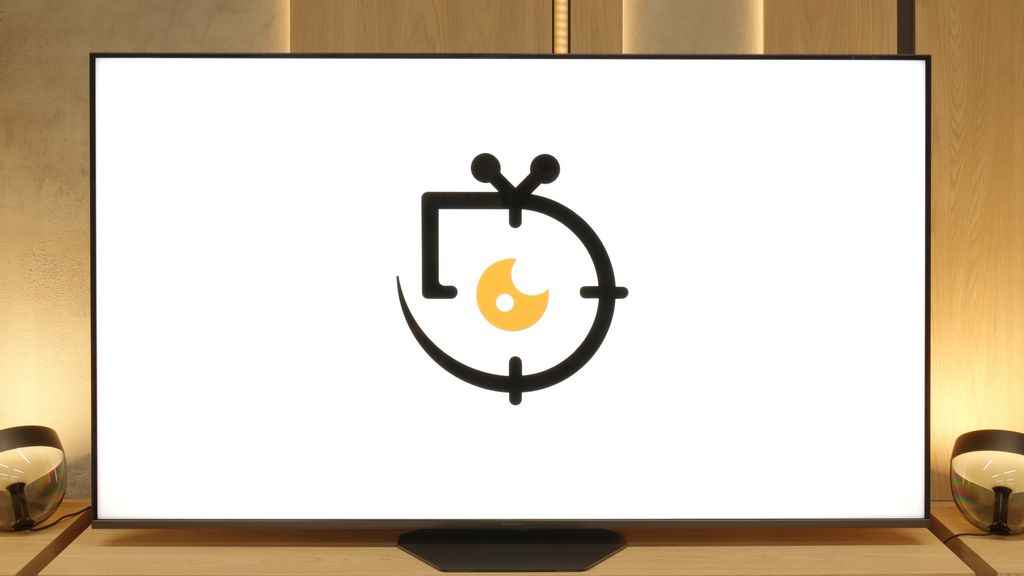
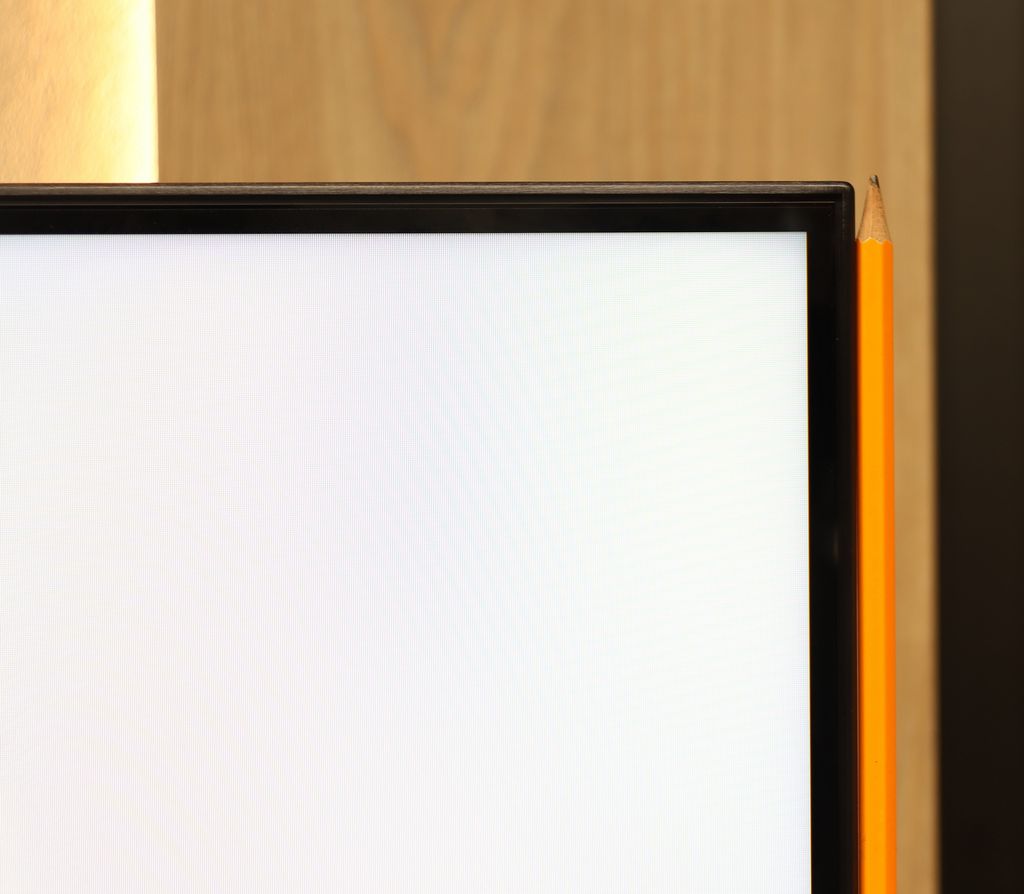
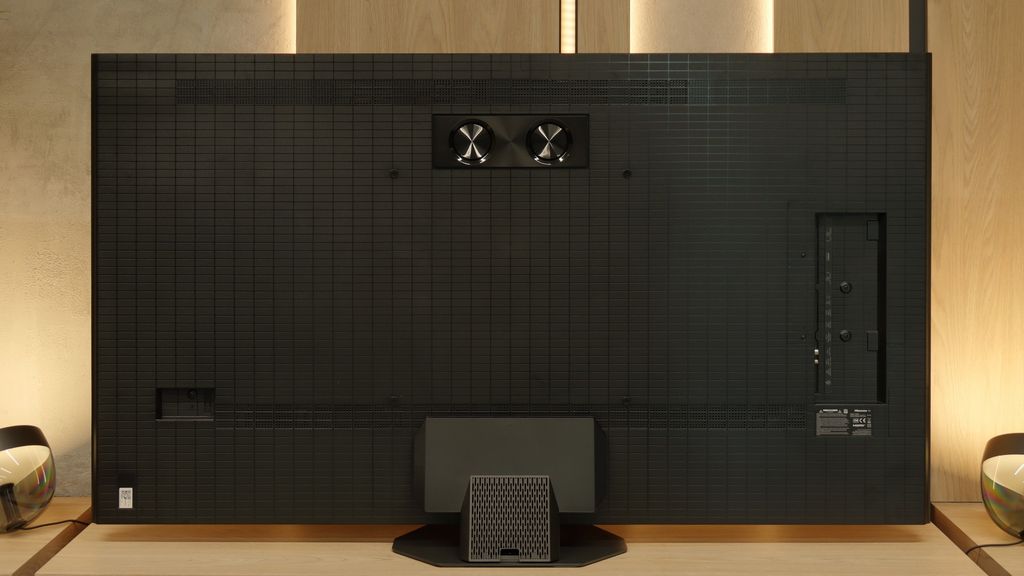
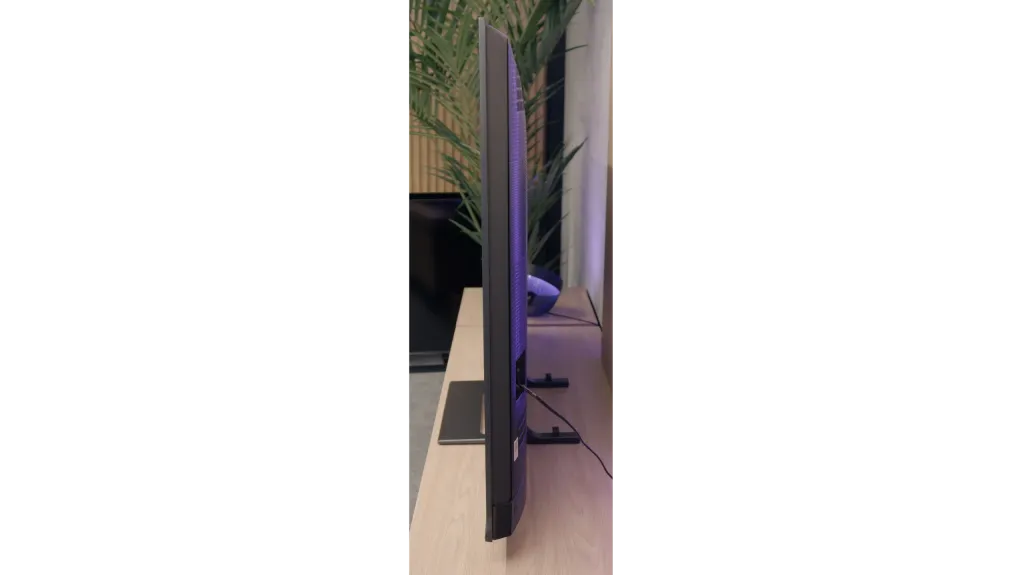
Contrast and black detail
7.9/10
8.6/10
Local dimming function: Yes, number of zones: 504 (36 x 14)
Local dimming function: Yes, number of zones: 2048 (32 x 64)
Contrast:

Result
∞:1

Result
69,000:1

Result
∞:1

Result
5,500:1

Result
2,700:1

Result
1,024,000:1

Result
140,000:1

Result
35,000:1

Result
22,350:1

Result
22,300:1
Halo effect and black detail visibility:

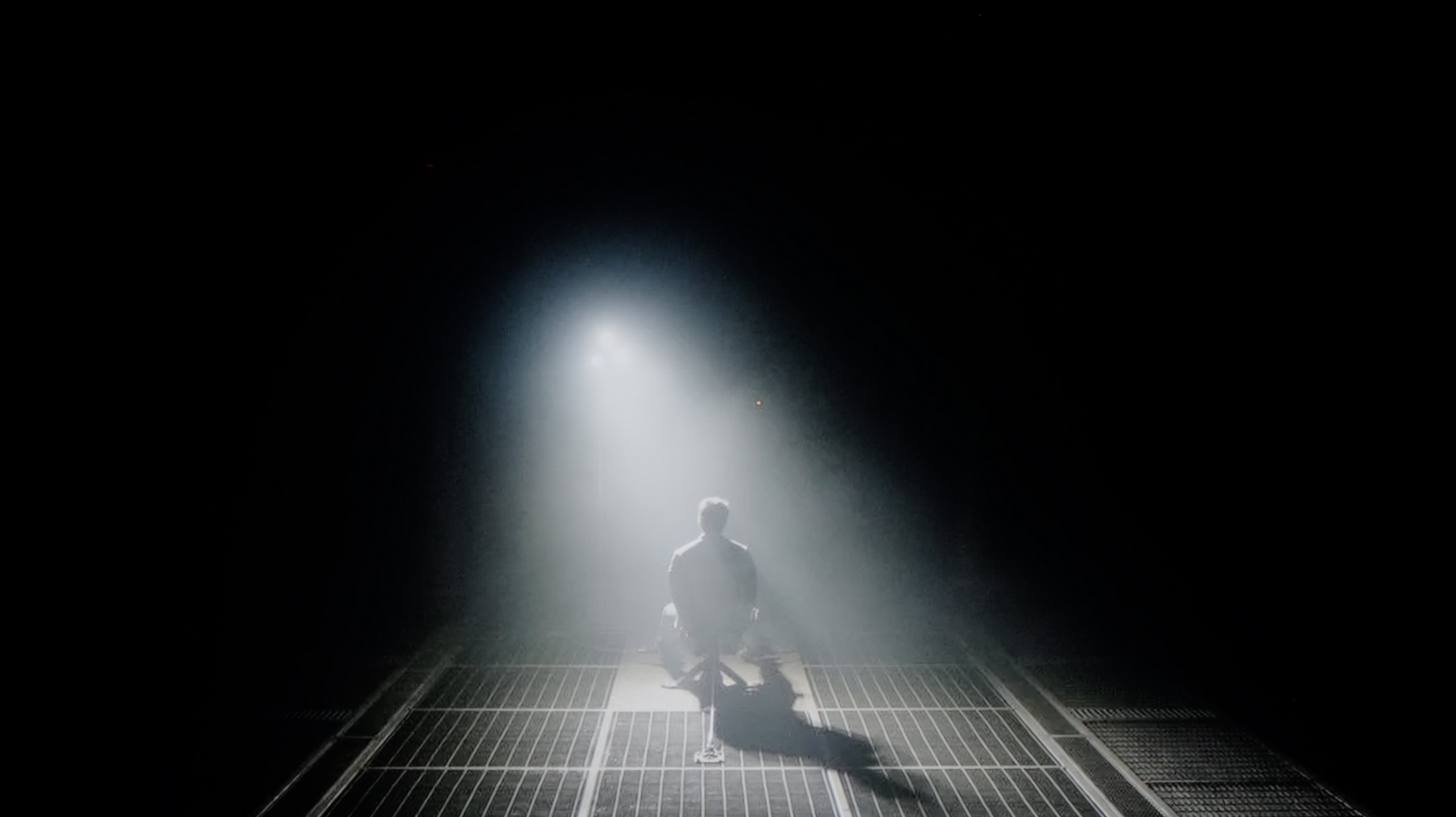
Samsung QN92D is one of the highest models of NeoQLED 4K (mini LED) from the Korean manufacturer for 2024. Although it does not offer as many local dimming zones as its more refined sibling Samsung QN92D, the number of 504 dimming zones in the 55-inch version is still impressive. The VA panel works well with this solution, providing excellent results in terms of contrast. The contrast in Samsung QN92D is outstanding for a non-OLED television. Even in challenging scenes, like those from the films "Oblivion" or "Arrival", the contrast is nearly infinite and can compete with the best televisions in the OLED segment, which is quite rare among LED-backlit televisions. However, mini LED technology has its limitations compared to organic panels, which can lead to certain issues. For example, on the latest test pattern from Pioneer, the television struggles significantly. This may be due to a very aggressive dimming algorithm, causing the mini LED lights to sometimes be unable to "decide" what to do – whether to illuminate certain elements or maintain black levels. Despite these shortcomings, Samsung QN92D is one of the best LCD televisions in terms of contrast and black levels.
The unit of Hisense U8Q that we tested, measuring 65 inches, is equipped with a VA panel, which in itself offers high native contrast. However, this is not the greatest strength of this model – the key lies in the Mini LED backlighting. Thanks to the use of thousands of dimming zones and a well-developed light management algorithm, the contrast in the U8Q can be described as excellent, especially for a TV of this technology.
The best results reach a level of around one million to one – a result that commands respect and places the U8Q among the top Mini LED televisions. Indeed, there are certain hiccups and even drops in contrast, but they are not as dramatic as in many other models of this class that we have tested on our portal. It should also be noted that like every Mini LED television, the U8Q is not entirely free from typical imperfections – sometimes the image may be dimmed too much or slight blooming with a halo effect may appear. However, this does not change the overall impression: the contrast in the Hisense U8Q is stunning and constitutes one of the greatest assets of this model.
HDR effect quality
6.7/10
7.6/10
Luminance measurements in HDR:

Result
1947 nit

Result
617 nit

Result
738 nit

Result
271 nit

Result
1479 nit

Result
2195 nit

Result
725 nit

Result
1652 nit

Result
485 nit

Result
1541 nit
Scene from the movie “Pan” (about 2800 nits)


Scene from the movie “Billy Lynn” (about 1100 nits)


Static HDR10


Dynamic: HDR10+
Dynamic: Dolby Vision


HDR luminance chart:
Hisense U8Q
Luminancja HDR
Luminance of RGB colors
Samsung Neo QLED QN90D / QN92D
Luminancja HDR
Luminance of RGB colors
During synthetic tests, Samsung QN92D displayed its incredible capabilities in terms of brightness. The graphs clearly indicate that the television can achieve an impressive 2000 nits, giving it a solid power base to compete with the best models on the market. Such a result places it at the forefront, especially in the context of displaying HDR content, where brightness plays a crucial role. However, what happens when we transfer the tests to real film scenes? Under favourable conditions, such as the first scene from the film Life of Pi or the last scene where the image is entirely flooded with light, Samsung QN92D can achieve nearly laboratory results, impressing with its brightness. The situation looks different, however, when small, bright objects appear on a dark background, as in the fourth scene from the film Sicario. In such cases, the television does not perform as well – brightness drops several times, and the maximum values under the best conditions are around 600 NITS. Similar to the case with contrast, these limitations arise from the use of an aggressive local dimming algorithm. This algorithm aims to reduce the 'halo' effect around bright objects on a dark background, but often at the expense of overall brightness. As a result, while the television excels in brightly lit scenes, its ability to display full brightness is limited when it comes to small, vivid elements.
When it comes to HDR, the Hisense U8Q shows its claws. On paper, that is, in synthetic measurement tests, the television can achieve nearly 4000 nits of peak brightness. This is a value that most models can only envy. In practice, this translates to very strong light effects in films – in some scenes, we managed to measure a real brightness of between 1500 and 2000 nits, which is a level typically reserved for the absolute top tier of televisions on the market.
Of course, it's not always perfect. In small, pinpoint elements, brightness can drop – a good example is scene number 4 from the film Sicario 2, where instead of thousands of nits, we get around 500. But it’s worth noting that the effect does not disappear completely – the light is still visible, and the image does not seem artificially dimmed. This is a typical issue with Mini LEDs, so it's difficult to consider this a major downside.
On the other hand, the colour reproduction is a huge plus. Thanks to additional coatings that enhance colour saturation, the U8Q nearly covers the entire DCI-P3 colour space (98%), and for the wider BT.2020 range, it achieved over 80%. This is an excellent result that makes HDR films look rich, vivid, and simply very cinematic.
Factory color reproduction
6.1/10
7/10


Factory Mode
After calibration
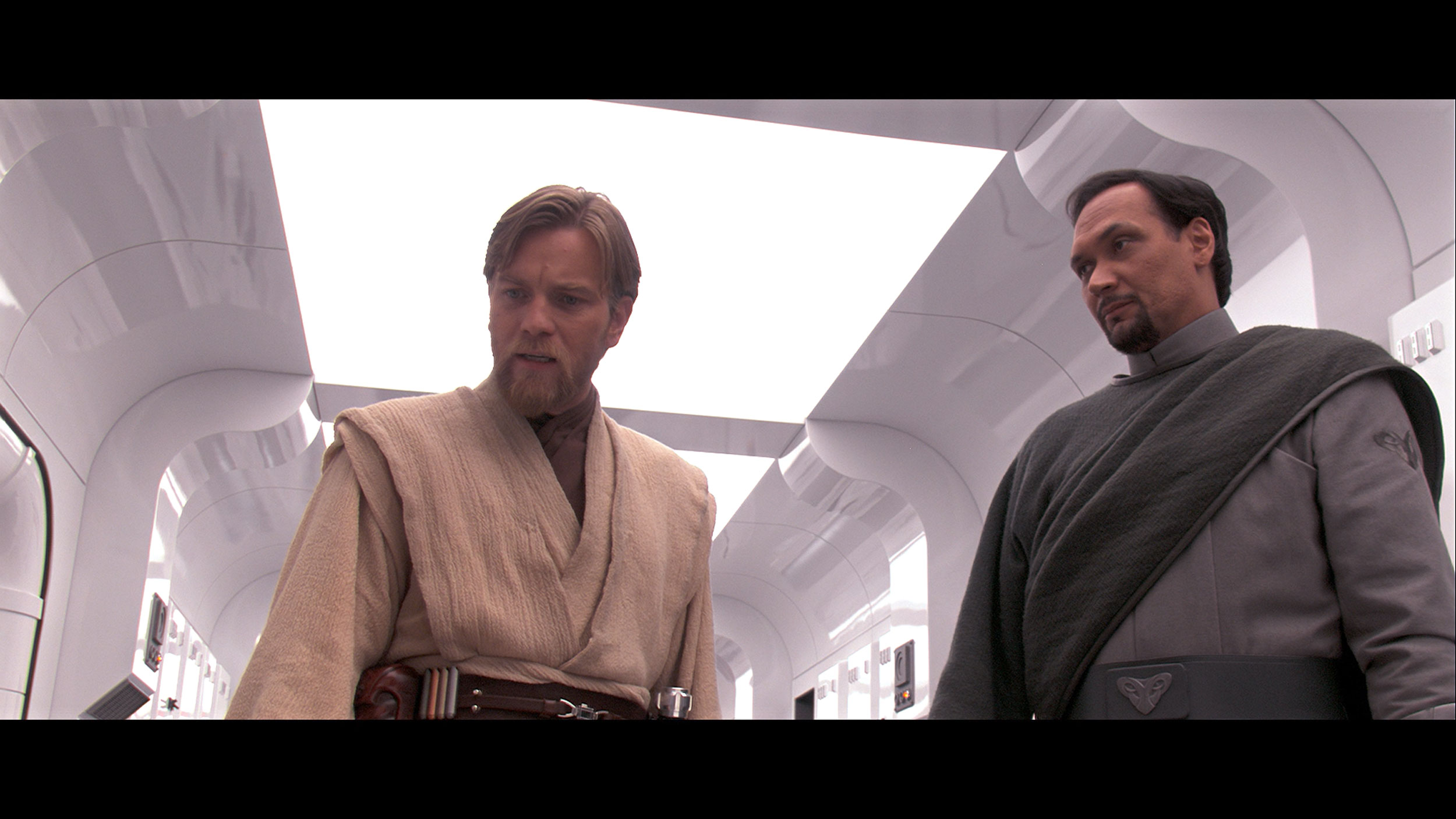

Factory Mode
After calibration
The best mode that consistently reproduces colours on the Samsung QN92D is, as it has been for years, the Filmmaker mode. Although it generally offers decent colour quality, it is not without significant issues. Let’s start with the analysis of images in HD/SDR quality. The biggest challenge here is white balance – the graphs show considerable instability, with a pronounced red dominance, making the image too warm. This distortion causes shades to be unnaturally shifted towards warmer tones, which can negatively affect the perception of materials with natural colours. The contrast, based on the gamma graph, although not the worst, remains far from ideal, impacting the overall image quality, especially in darker scenes.
This problem persists with 4K materials, such as series or movies of higher quality. In this case, the white balance also proves faulty, with noticeable deficiencies in blue and red colour, leading to tonal shifts. Tests using the Colour Checker tool confirm these issues – all colours tend to shift towards yellow tones, further distorting the natural appearance of the image. Although the Filmmaker mode is one of the best available modes for watching cinematic content, it still requires improvements, especially concerning colour accuracy and white balance.
We must admit that when the U8Q arrived at our editorial office, we were slightly surprised… and positively so. Usually, in televisions, the white balance immediately requires adjustment – it can be too warm or too cold, which immediately leads to strange colour mistakes. Meanwhile, here the situation looks really good straight out of the box. Of course, we are talking about our unit, so there is no guarantee that every model will be equally well calibrated, but in our case, the first impressions were very positive. The only more apparent issue concerned the way the television manages brightness. Looking at the EOTF graph, it is clear that the U8Q tends to brighten small elements on the screen. This, in turn, caused what we mentioned earlier – slight overexposure and the impression that the entire scene can be a bit too bright. However, this is not a flaw that undermines the picture, rather an effect characteristic of this model.
Color reproduction after calibration
8.7/10
8/10

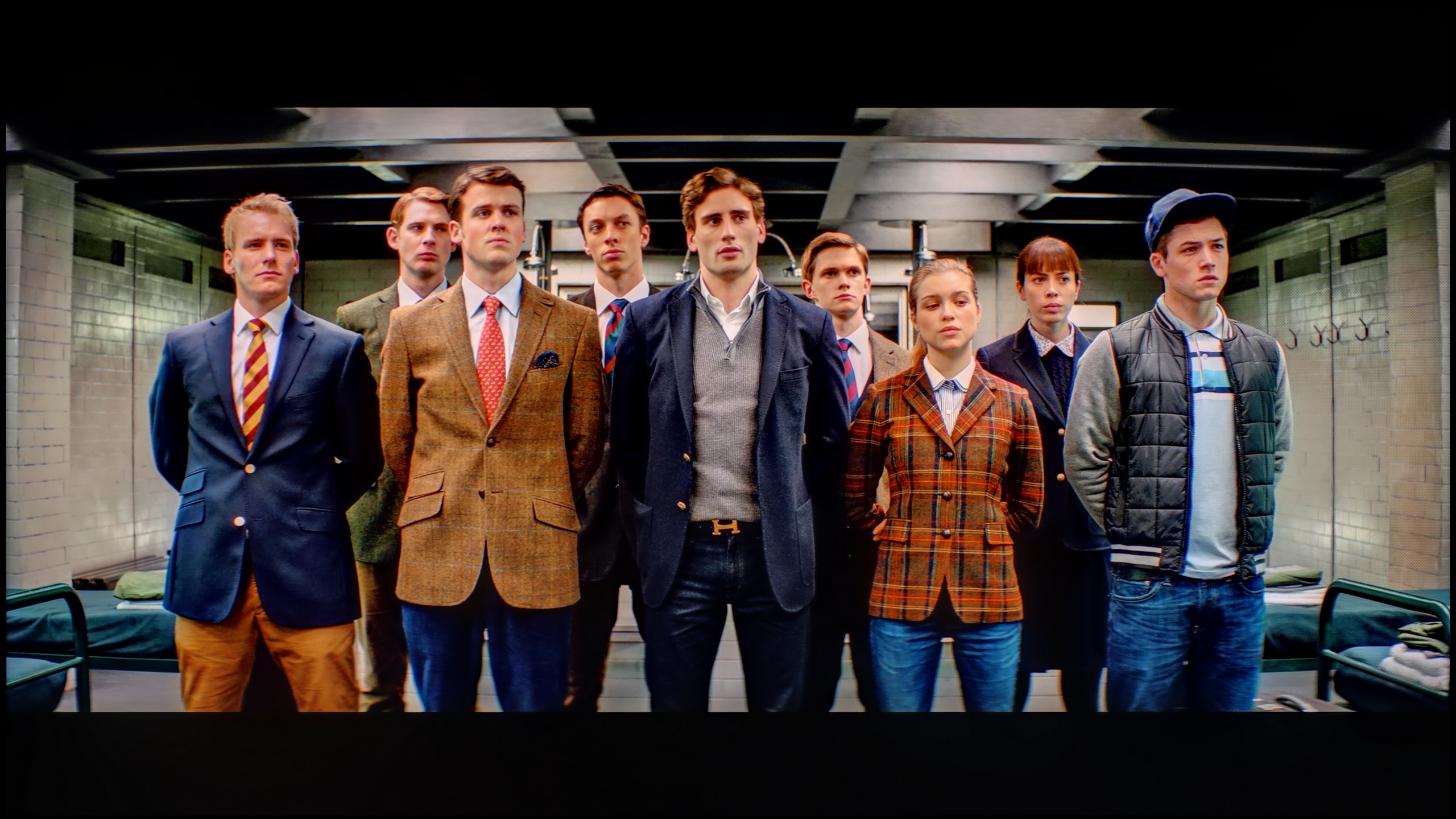


After calibration, the Filmmaker mode on the Samsung QN92D television shows significant improvement, particularly in terms of SDR content. The white balance has been greatly enhanced – the previous colour misalignment and dominance of red have been eliminated, resulting in a more natural colour reproduction. In terms of brightness, although the gamma chart did not require significant adjustments, it has been stabilised, which affects overall picture quality.
Regarding high-quality materials, the white balance has also improved in this case. However, it is important to note the contrast. The EOTF curve, which illustrates values in this area, initially seems correct. However, when we look at the details, the television struggles to maintain appropriate contrast in film materials. The EOTF curve reveals certain discrepancies, suggesting that despite advancements, there are still areas needing improvement in this aspect. The television still strives for excellence in contrast reproduction. One advantage of this television is colour saturation. Skin tones are rendered very well, and although some colours can be slightly oversaturated, the final effect looks truly appealing – the colours appear rich and vibrant.
Despite some shortcomings in contrast, after calibration, the Filmmaker mode on the Samsung QN92D offers excellent picture quality, with natural colour reproduction, making it a great choice for watching films.
Of course, we wouldn’t be ourselves if we didn’t make adjustments to the white balance. After calibration, we managed to equalise the SDR signal to practically perfection – older films, YouTube content, and classic television looked almost ideal on the U8Q. This is truly an exceptional level that shows this model can do a lot if given a bit of help. Unfortunately, the situation is different with HDR content. The colours themselves don’t pose many problems, but the U8Q’s biggest issue remains the EOTF brightness characteristics. In practice, the television tends to “over-expose” beyond how the image should look in its original form. It’s that slight "bleeding" that we noticed earlier in comparisons with the best screens on the market. It’s a bit of a shame that this characteristic can’t be fully tamed – if we could maintain equally good control over brightness in HDR as in SDR, we would be dealing with an absolutely reference-quality image.
Smoothness of tonal transitions
9/10
8.9/10





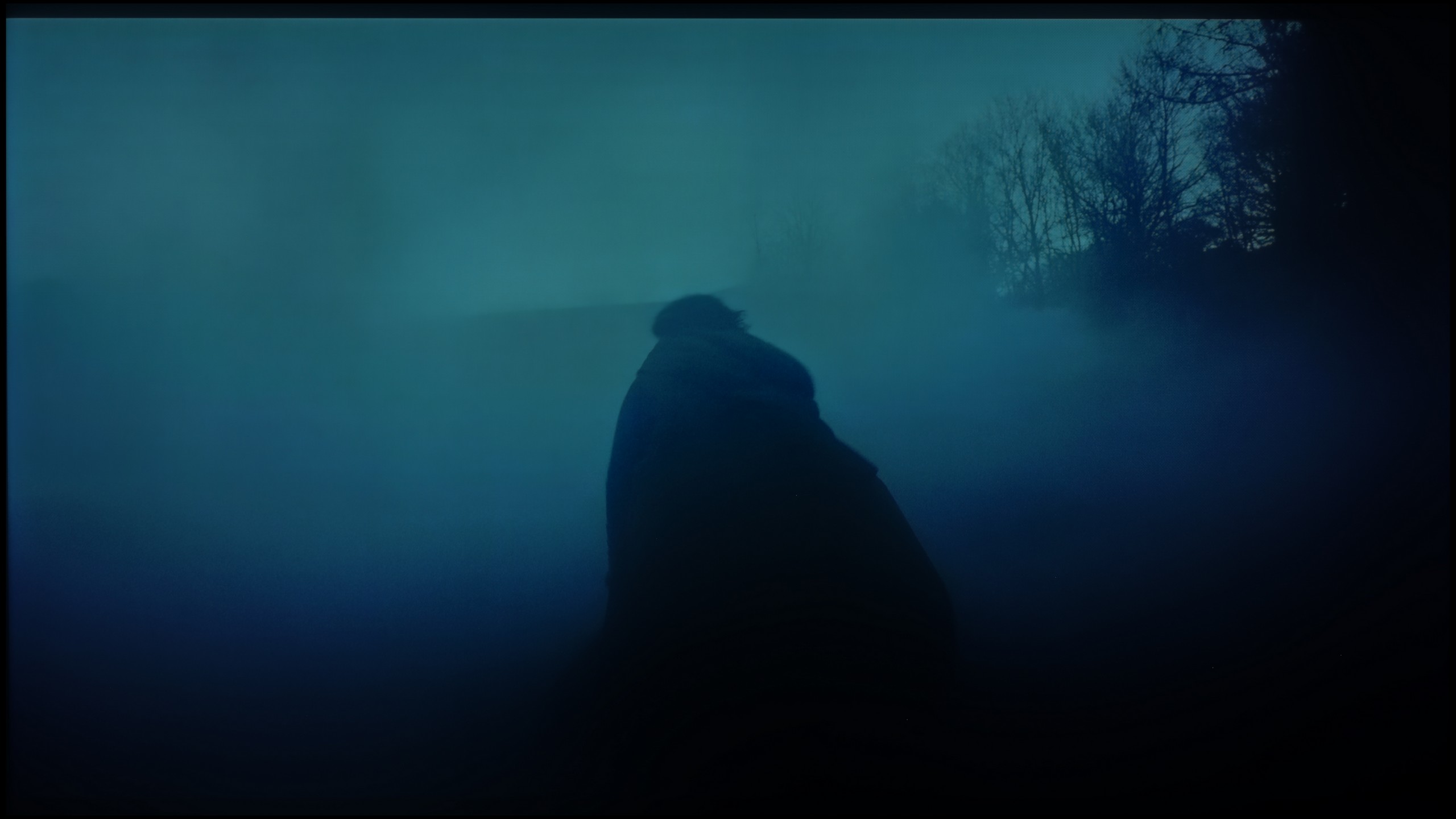

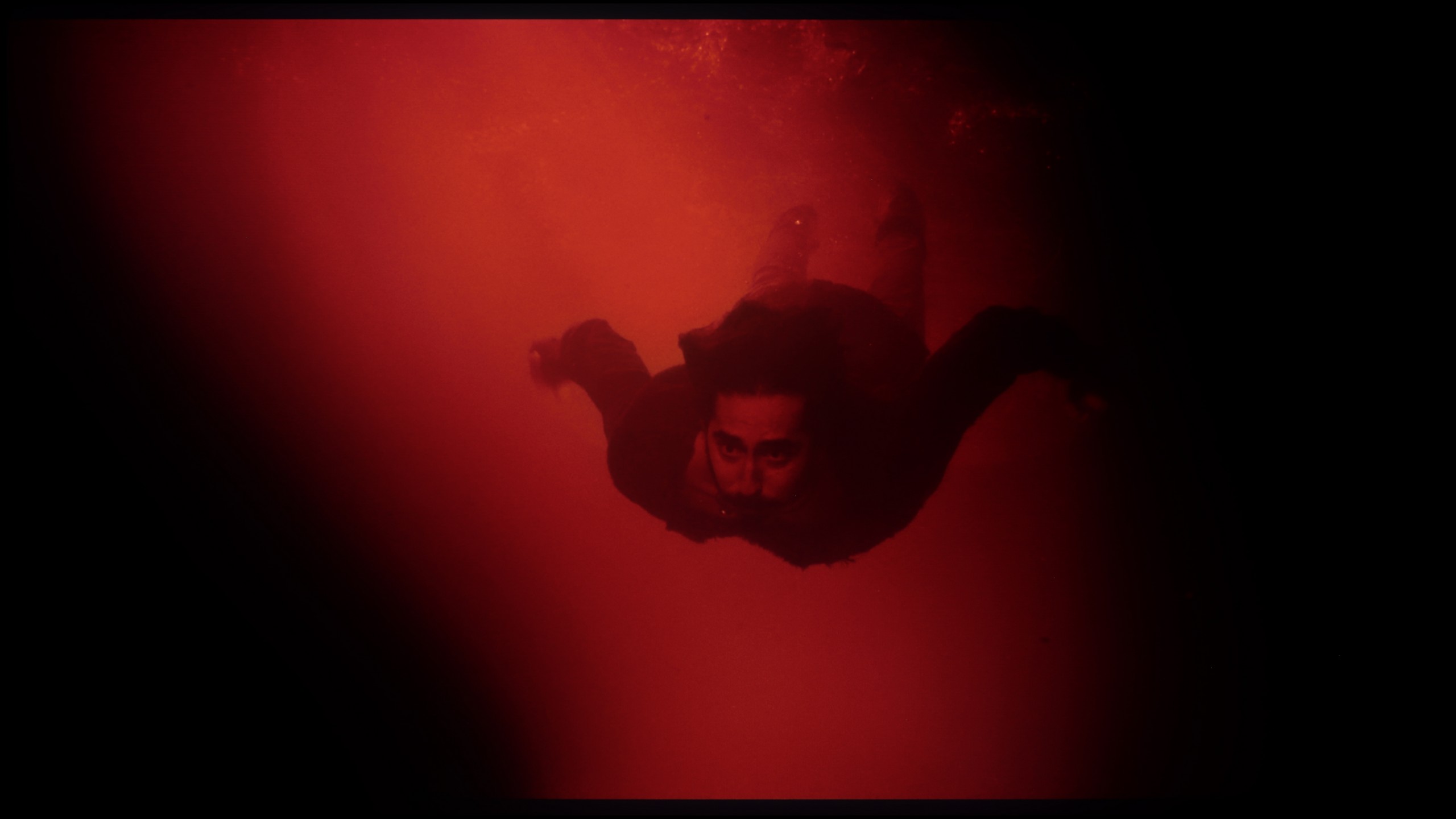




The fluidity of tonal transitions in the TV Samsung QN92D is excellent, making the image appear remarkably natural, without noticeable disturbances. In scenes with complex colour gradations, the TV performs superbly, ensuring smooth and uniform transitions. Competing OLED TVs in a similar price range can successfully take a cue from this, as the Samsung QN92D offers quality that places it on par with models equipped with QD-OLED matrices.
When it comes to the fluidity of tonal transitions, the Hisense U8Q made a really great impression on us. Even in the darkest scenes, where unsightly bands and ugly transitions usually appear on other televisions, here the image remains smooth and cohesive. Nothing layers, there is no "stair-step" effect – everything looks as it should. Similarly, in brighter shots – it is also very good. Sure, if we looked through a magnifying glass, we would probably find some minor flaw, but during normal viewing, it's hard to complain about anything. Overall, it performs very, very well!
Image scaling and smoothness of tonal transitions
7.2/10
8/10
Smooth transition function

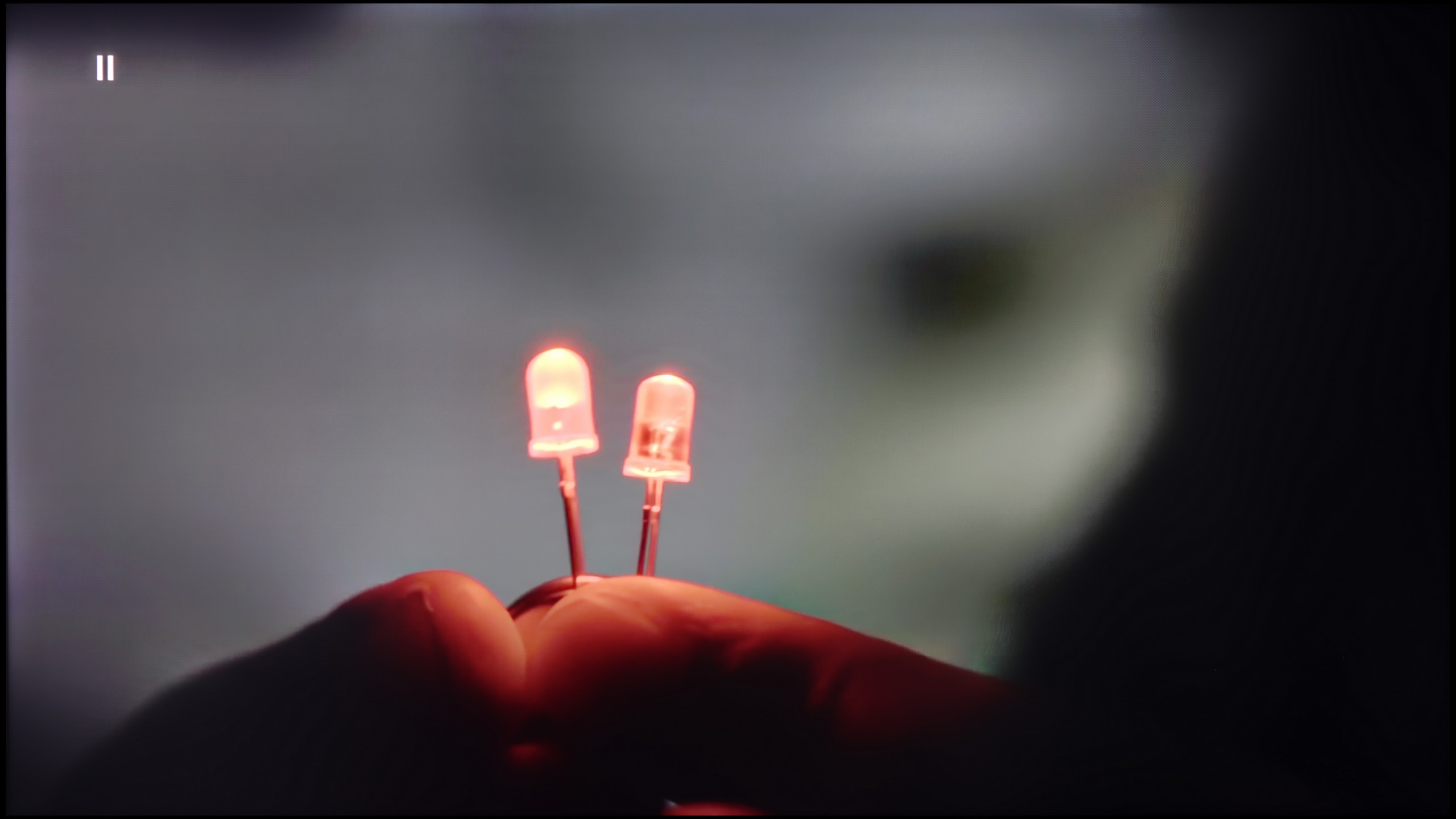
Image without overscan on the SD signal


Let’s check how the Samsung QN92D television performs with tonal transitions in very poor quality materials. The noise reduction feature demonstrates good effectiveness, improving the smoothness of tonal transitions even in challenging conditions. However, it should be noted that, as with other Samsung televisions, the effectiveness of this feature may lead to the removal of desirable elements, such as film grain, which can sometimes affect the authenticity of the image.
Regarding digital processing, the Samsung QN92D television also performs excellently. During testing, the image was presented very well, with the model shown in a natural and correct manner. Details such as branches in the background were reproduced with great precision, highlighting the television's ability to enhance the quality of low-resolution materials.
Hisense U8Q handles lower quality materials quite well. The television can smooth out tonal transitions thanks to the "Smooth and Gradient Picture" feature – it works best when set to Medium. At this setting, it nicely dims unwanted bands and unevenness in the picture, but importantly, it does not remove the film grain or fine details.
The upscaling itself is also at a good level. Images from lower resolutions appear smooth and soft, sometimes even overly so – we get a plastic effect that may not appeal to everyone. Fortunately, this can be easily corrected with the sharpness slider, allowing the picture to be adjusted to personal preferences.
Blur and motion smoothness
7.5/10
7.8/10

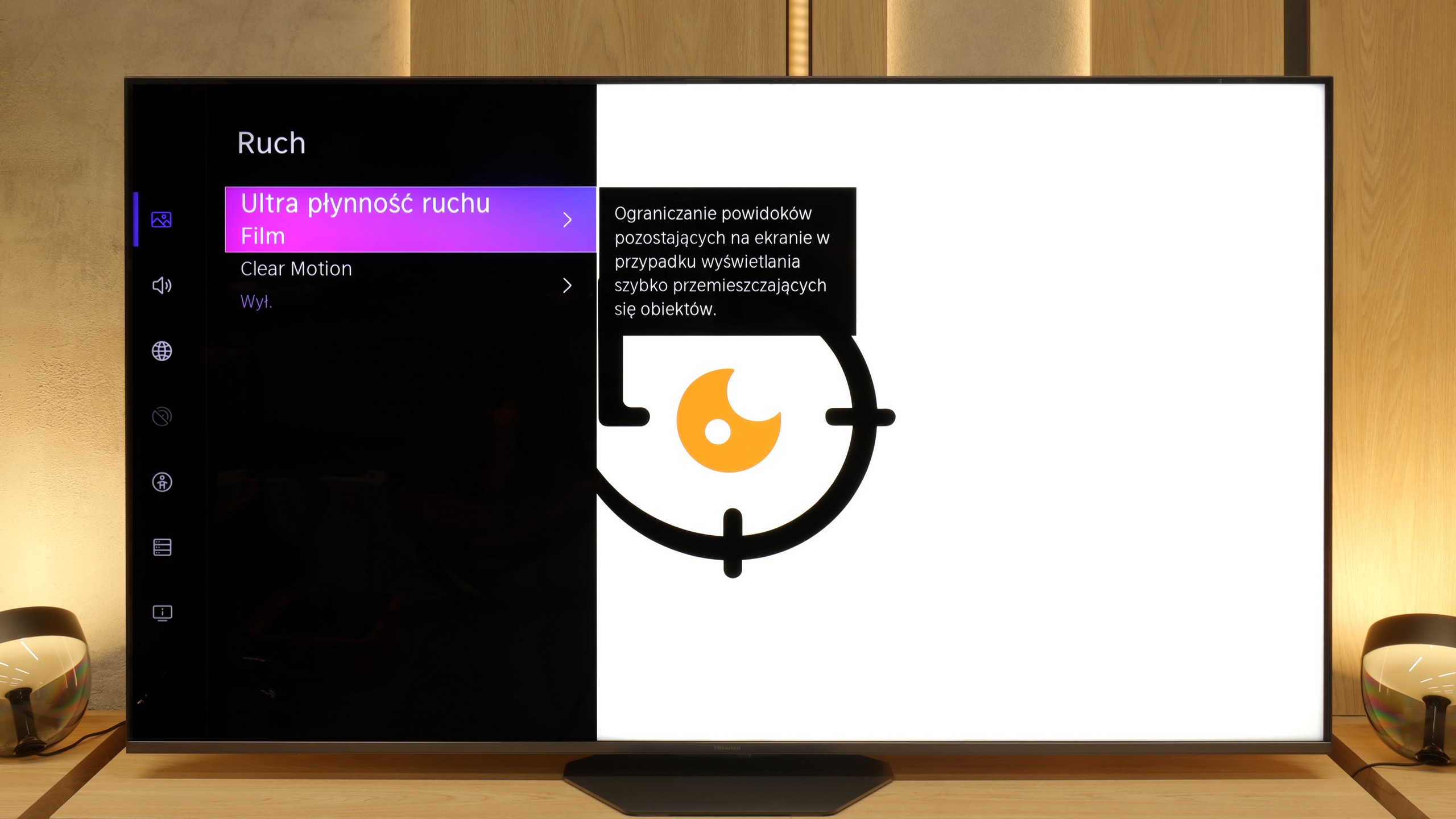
Blur (native resolution, maximum refresh rate):



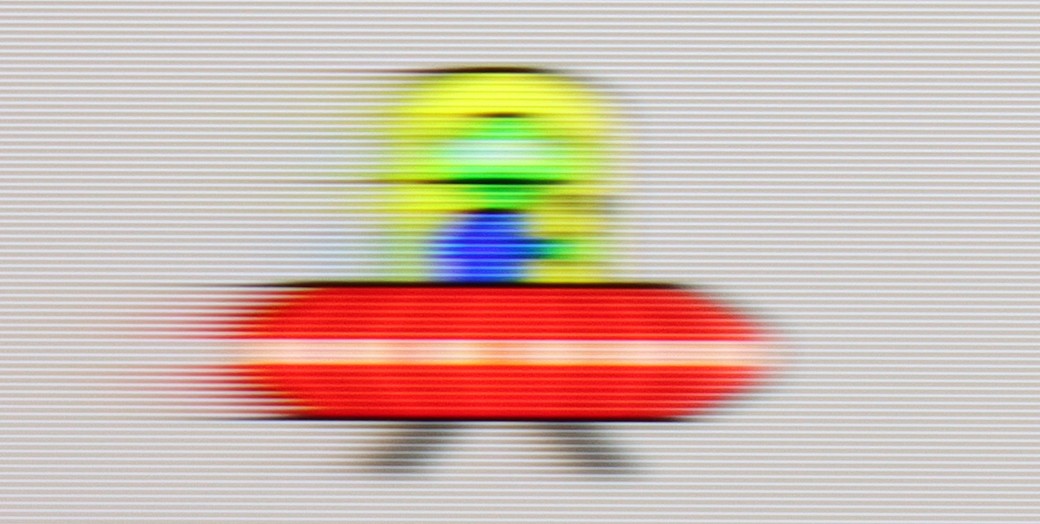
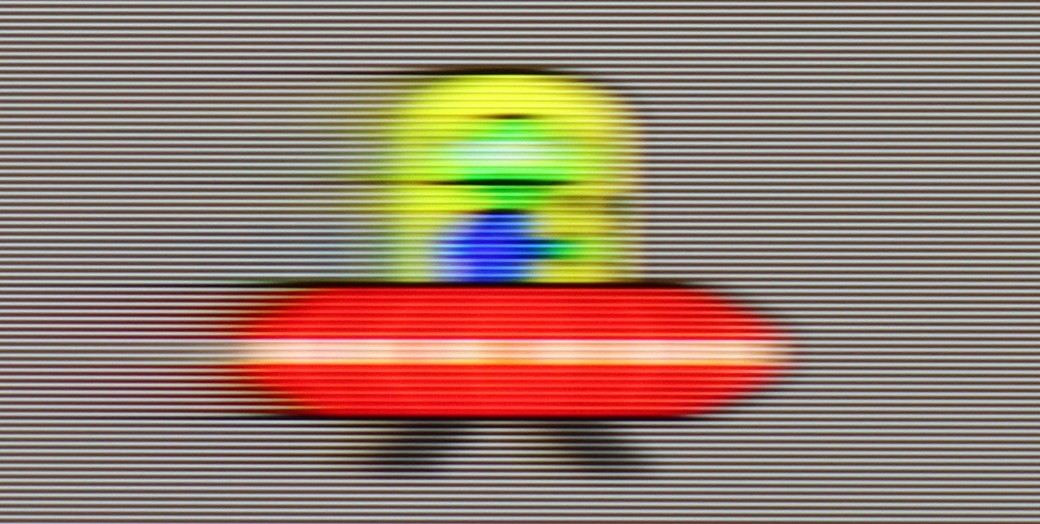
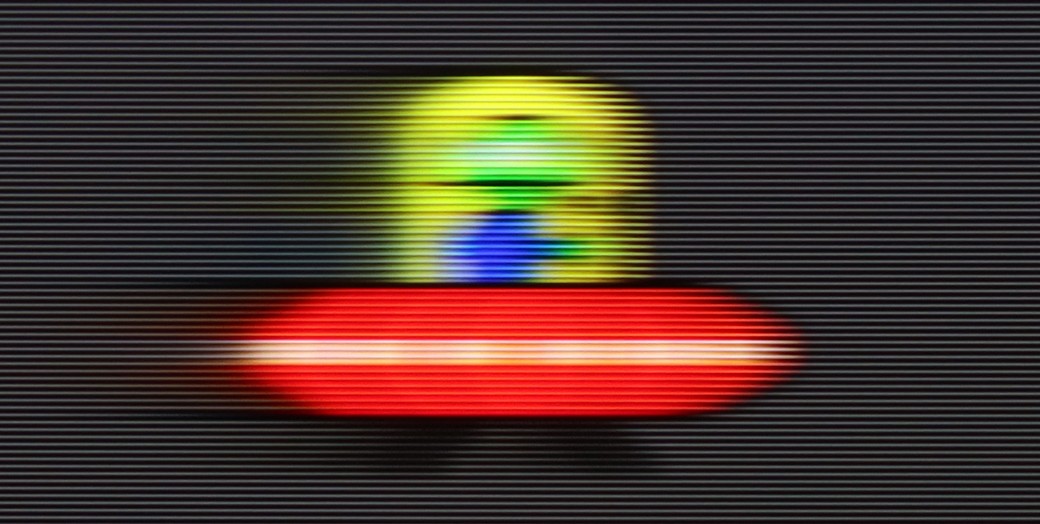
Blur (BFI function enabled):
Image flickers in this mode






Smużenie ():
Smużenie (1080p@288Hz):

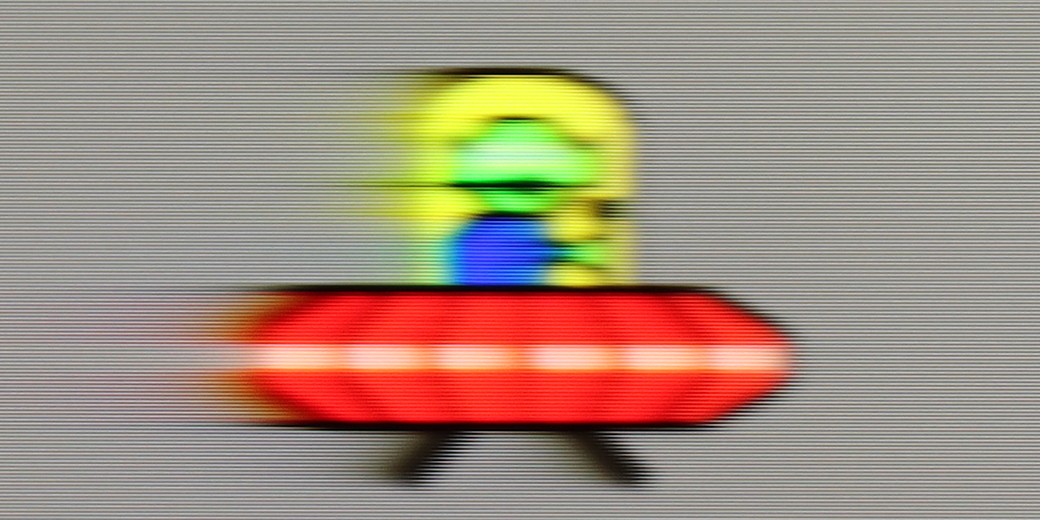

The Samsung QN92D television is equipped with a 144 Hz panel; however, when watching content using the smoothness feature, the maximum refresh rate is 120 Hz. This means that both gamers and those who watch a lot of sports will be satisfied with the picture quality. It is also worth mentioning the available image enhancement options, such as the "blur and judder reduction" feature, which allows users to adjust the smoothness to individual preferences on a 10-point scale. Blur reduction is responsible for increasing the sharpness of quickly moving objects, while judder reduction smooths motion, eliminating the "stutter" effect. Thanks to these advanced settings, optimal visual experiences can be achieved, making the Samsung QN92D ideal for both dynamic scenes and intense gaming sessions.
In terms of motion blur, the television performs really well, and it is hard to find anything to criticise. The only comment we might have is a slight overshoot effect noticeable on dark backgrounds during our test with "Ufoludkiem". Nevertheless, with the advanced smoothness settings, the Samsung QN92D is perfect for both dynamic scenes and intense gaming sessions.
Hisense U8Q features a panel that can refresh the image up to 165 Hz in 4K resolution. In practice, this will primarily be utilised by PC gamers, but as the saying goes – it’s better to have it than not 😊. For films and series, we have a built-in smoothness enhancer called Ultra Motion Smoothness. In the settings, it can be easily adjusted to suit personal preferences – whether we want a more “cinematic” frame rate or a smooth, theatrical spectacle.
Console compatibility and gaming features
9.5/10
8.5/10
- ALLM
- VRR
- VRR range48 - 144Hz48 - 288Hz
- Dolby Vision Game Mode
- Correct implementation of HGIG
- 1080p@120Hz
- 1440p@120Hz
- 4K@120Hz
- Game bar

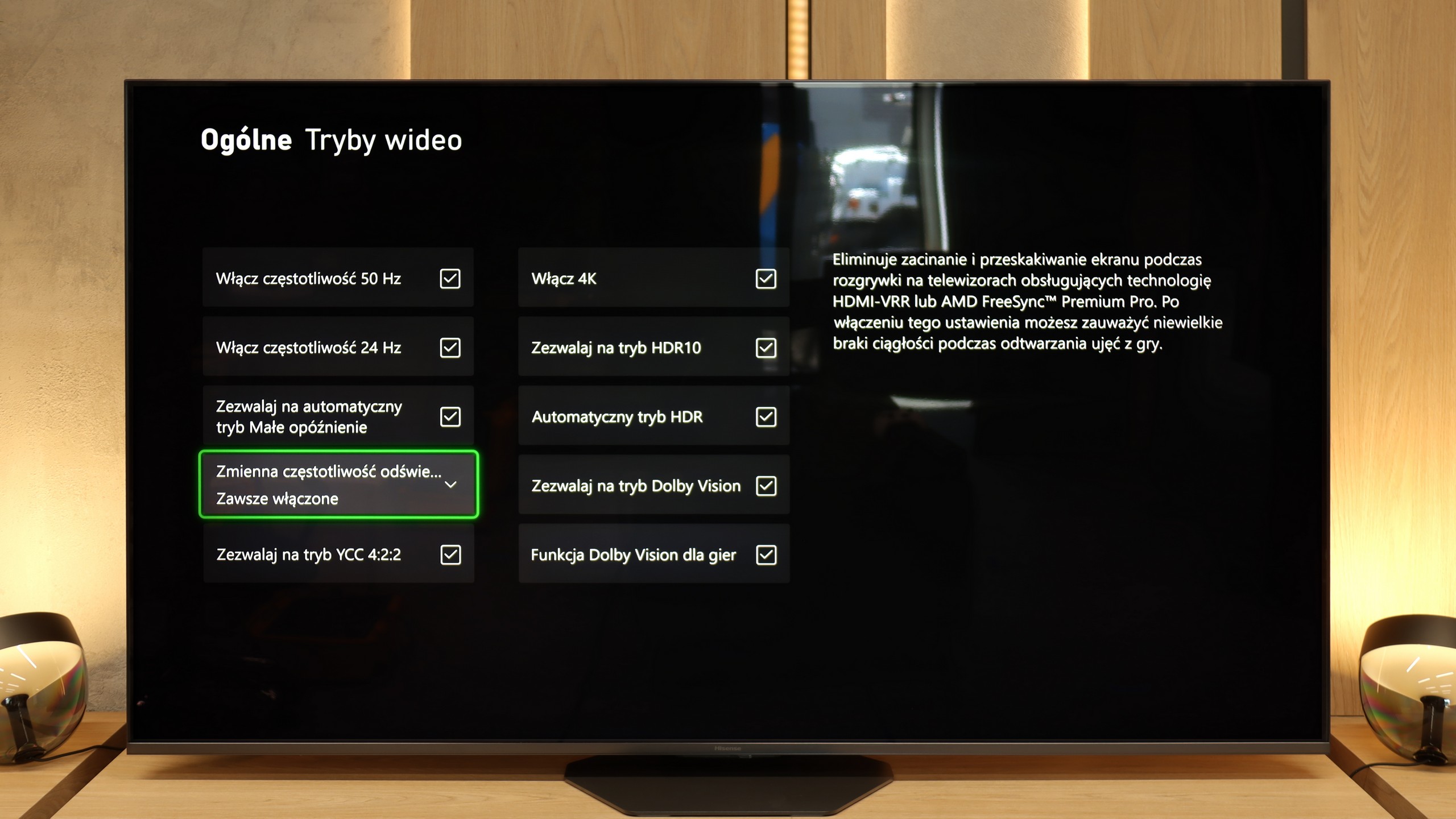

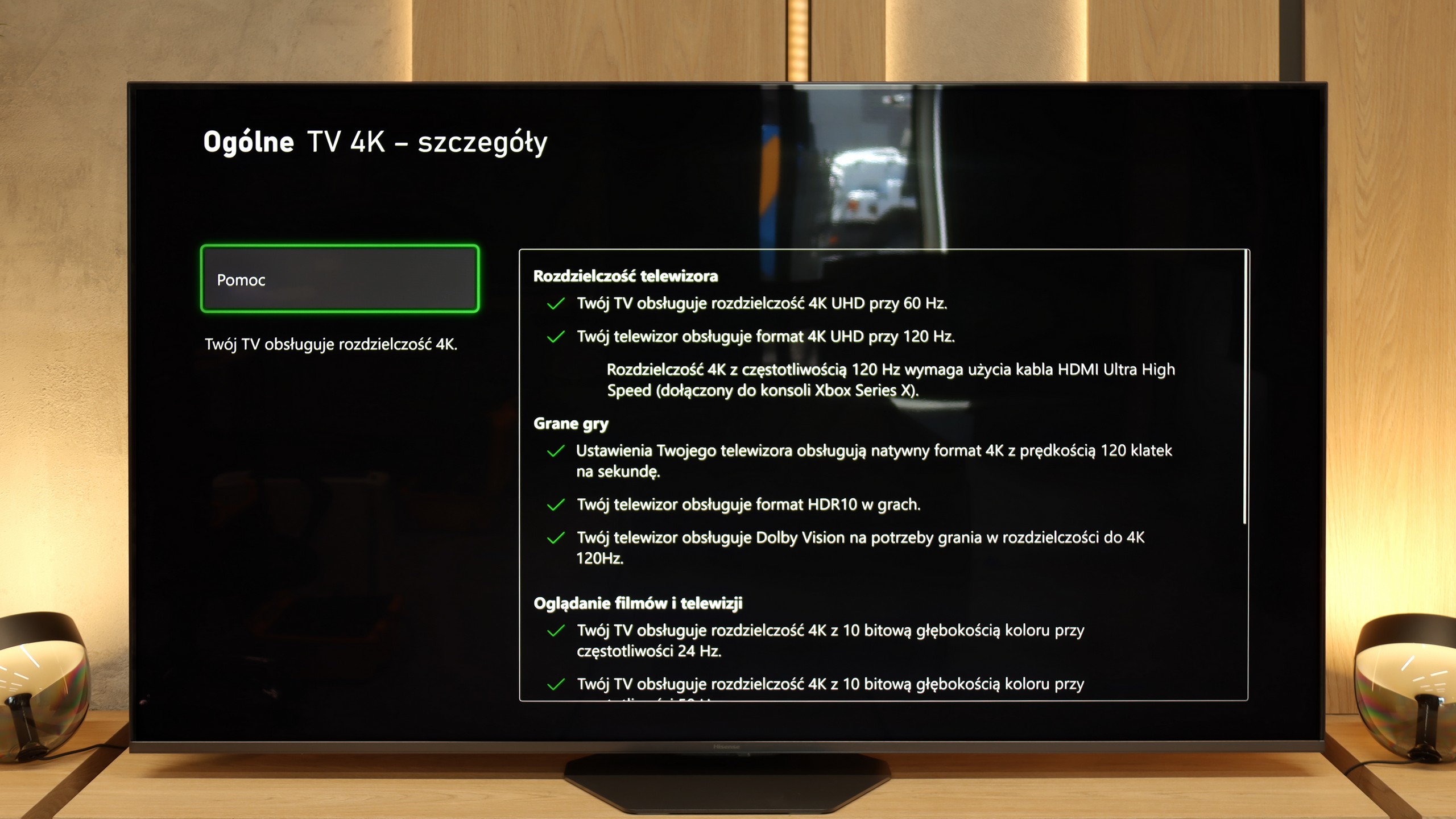

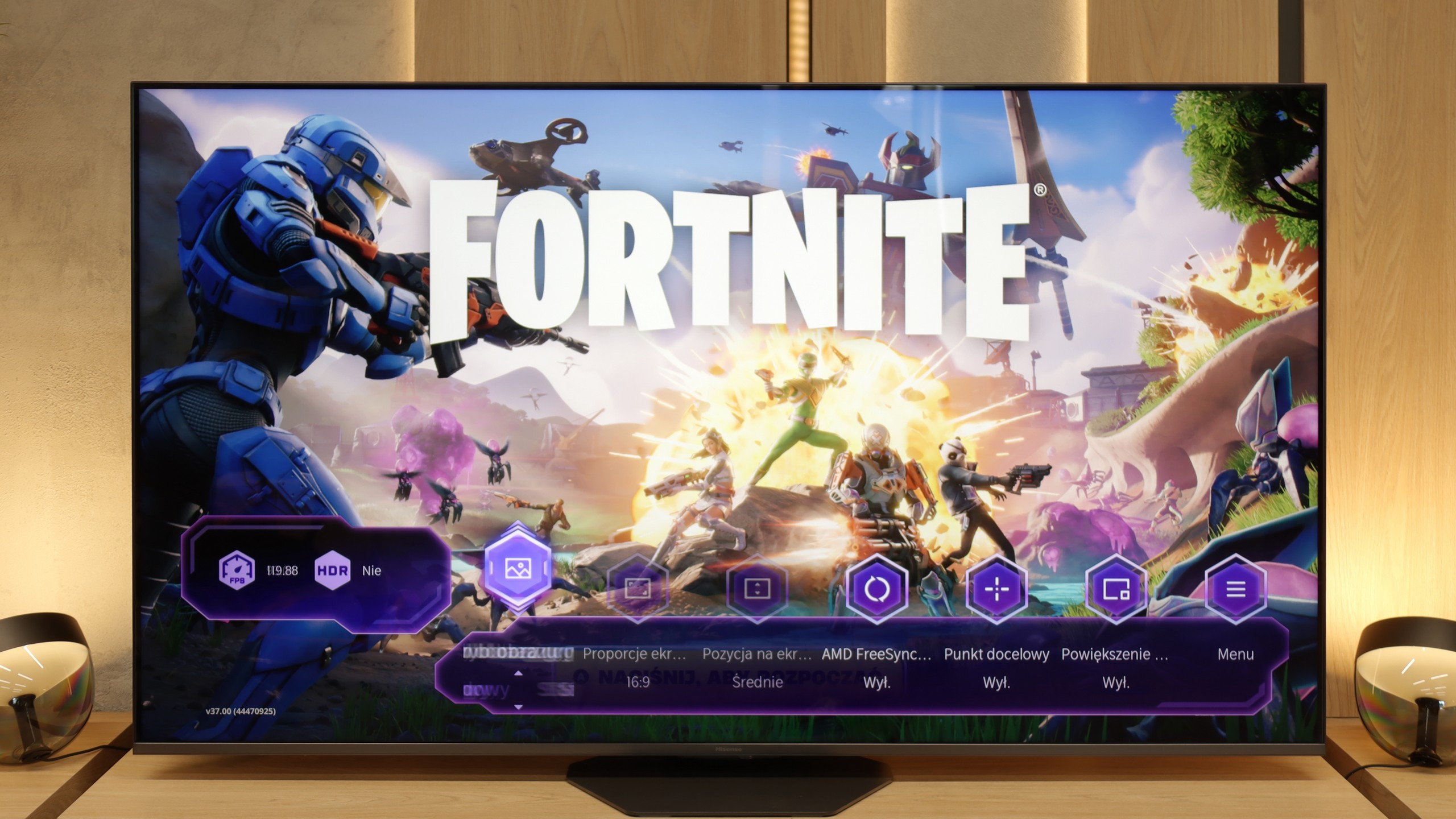

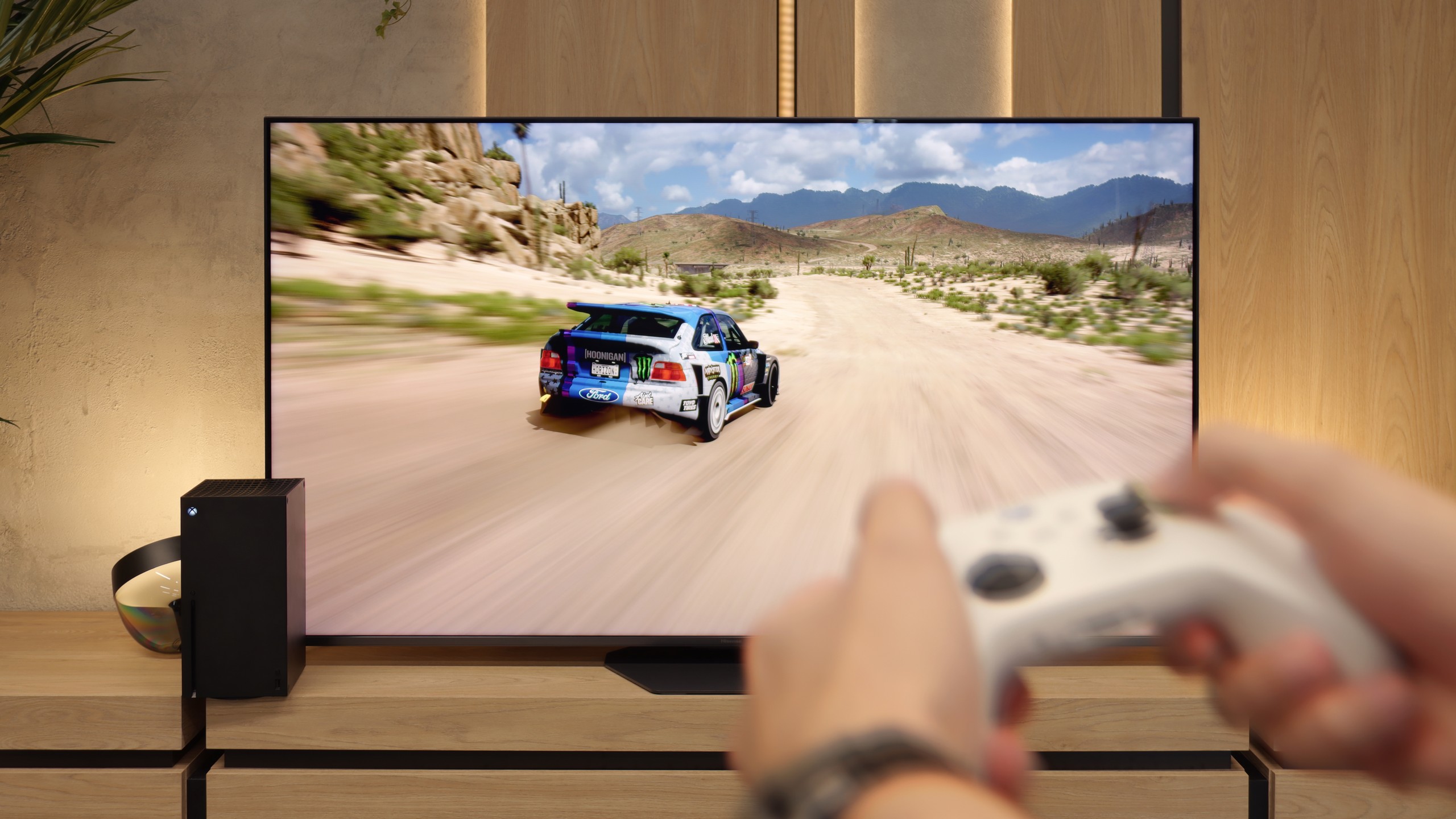
The Samsung QN92/QN90 television is an excellent choice for avid gamers, worthy of the highest recommendations. This model offers virtually all the features available on the market in terms of gaming, making gameplay even more exciting. One of its key features is the 120 Hz panel, which provides exceptional motion smoothness, vital during dynamic action games. The television also has low input lag, ensuring lightning-fast responses to player commands. Additionally, technologies such as VRR (Variable Refresh Rate) and ALLM (Auto Low Latency Mode) adjust the refresh rate and automatically switch the television to game mode, enhancing the gaming experience even further. An additional advantage is the Xbox app, which allows playing favourite titles directly on the television, eliminating the need for a console. This is a typical feature of Samsung televisions, which makes them unique in the gaming world.
Auto Motion Plus Game is a feature that truly deserves praise for Samsung. It is a motion smoother that performs excellently in games, allowing for the perception of a higher frame rate – a 30 frames per second image looks like 45, and 60 Hz becomes close to 90 Hz. Importantly, this feature does not introduce significant lag (input lag does not exceed 25 ms), so it does not negatively affect gaming comfort, unlike many other motion smoothers available on the market. As a result, players can enjoy a significantly smoother image without compromising on responsiveness.
In terms of features, the Hisense U8Q has practically everything one could expect from a modern gaming television. Thanks to the new processor, the manufacturer managed to implement as many as three HDMI 2.1 ports, so there is no problem connecting several consoles or a computer. On top of that, it includes all the key technologies – Game Bar with parameter preview, variable refresh rate (VRR), automatic low latency mode (ALLM)… in a word, a complete set.
But as is often the case with Hisense, it fell a bit short of perfection. The biggest drawback remains the lack of support for the HGiG format, which allows the brightness of the television to be adjusted to the console and maximises HDR in games. It’s a shame, because if this element were included, we would have a device practically made for gamers. As it stands, the U8Q remains “only” a very good choice 😉
Input lag
9.9/10
9.8/10
SDR
HDR
Dolby Vision
The input lag category is crucial for gamers, and the Samsung QN90D performs exceptionally well in this aspect. Input lag values below 13 ms are impressive, which means that the delay between pressing a button on the controller and the response on the screen is minimal. Such a low value allows for smooth and responsive gaming experiences, which is sure to please both casual gamers and professionals for whom every millisecond of reaction time counts. This makes the Samsung QN92D an excellent choice for those who value precision and speed in gameplay.
The Hisense U8Q really handles signal delay well. In 120 Hz mode, the input lag is around 10 ms, while with 60 Hz content it hovers around 18 ms. These are values that place it among the fast televisions, and in practice, it is difficult to have any significant complaints about them. The response is instantaneous; controlling a character or a car on the screen happens without perceptible delays. Whether someone is playing fast-paced shooters or calmer narrative titles, the U8Q performs excellently.
Compatibility with PC
8.6/10
8.4/10

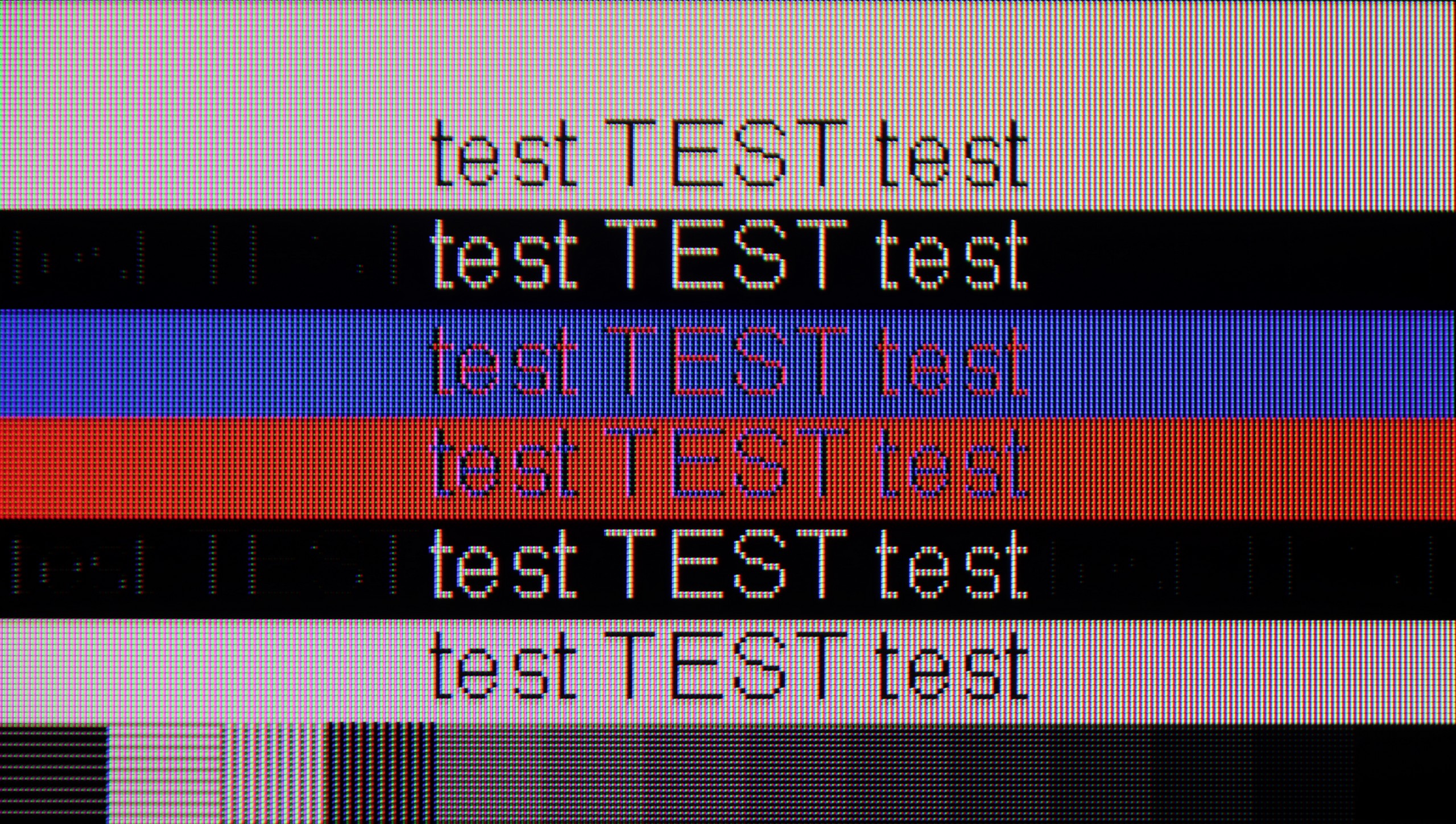
The television stands out with high performance, supporting chroma 4:4:4 and offering exceptionally low input lag. These features allow users to enjoy fluidity and responsiveness, making it an excellent choice for office work and everyday applications. However, one noticeable drawback is the poor visibility of horizontal lines on dark backgrounds. On the test pattern, the letters on the right appear more like vertical lines, which can be frustrating for some users. Nevertheless, the television generally works well with computers, providing comfort in performing daily tasks. It is also worth mentioning in this paragraph the "Remote PC" feature; thanks to Microsoft's collaboration with the Korean giant, we can pair Windows PCs seamlessly and use Office 360 applications.
As we mentioned regarding the features for gamers – Hisense U8Q also communicates well with computers. The 4K panel with a refresh rate of 165 Hz is impressive on its own, and at Full HD resolution, it can even boost to 288 Hz. This is great news for e-sports fans, where speed of reaction matters most, rather than the highest image quality. Additionally, it supports G-Sync and FreeSync, so gameplay is smooth, without stutters and annoying frame tearing.
A pleasant surprise is the presence of a USB-C port with DisplayPort functionality for laptops or even phones. This is a true novelty in televisions, and it's quite possible that Hisense will be a pioneer here, setting the direction for the competition.
When it comes to working with text, we must mention one small inconvenience. Although the U8Q correctly handles chroma 4:4:4, it has issues displaying very thin, horizontal fonts. This means that some subtitles or interface elements may be hard to read. Probably no one buys this model with office work in mind, but if someone were to have such a plan – it’s worth keeping this in mind.
Viewing angles
7.1/10
3.2/10
In the case of TVs with VA panels, one can usually expect limited viewing angles; however, Samsung QN90D surprises in this category. Thanks to the applied coating that widens the viewing angles, the television offers truly good performance, which is rarely seen in devices with this type of panel. Although VA panels are not usually the best in this regard, in this model the picture remains clear and vibrant even when viewed from the side, making it an excellent choice for larger rooms and group viewing.
In terms of viewing angles, the Hisense U8Q performs averagely – typical for a VA panel. It's a classic compromise: in exchange for much better blacks and contrast than in IPS panels, we must accept that watching from a wider angle does not look as good. Colours begin to lose intensity, and the picture slightly brightens. For a viewer sitting directly in front of the television – it’s a dream. For someone who sits more to the side – it’s a bit less so.
TV efficiency during daytime
6.4/10
8.2/10

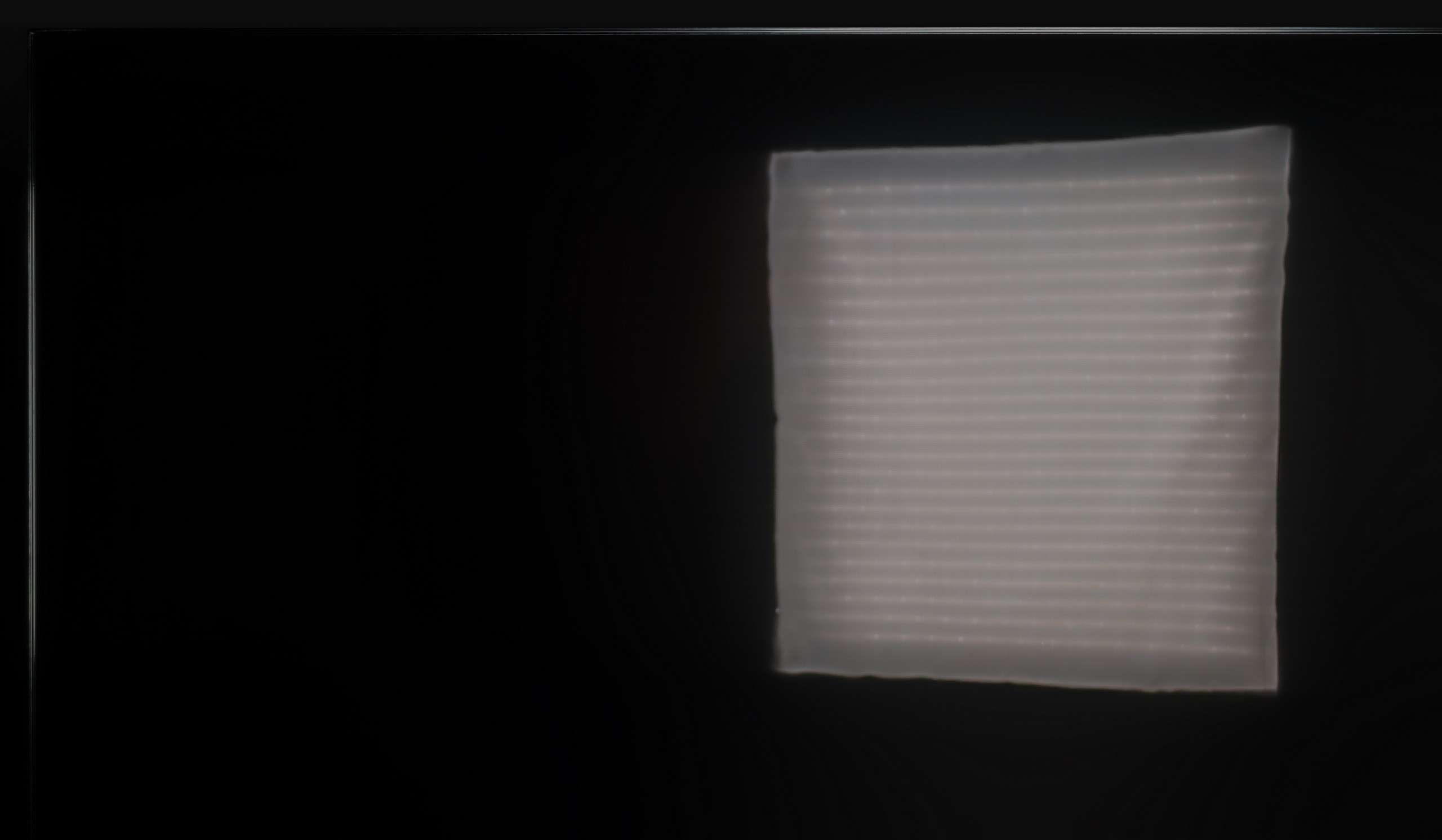


Matrix brightness
Average luminance SDR
Hisense U8Q: 914 cd/m2
Samsung Neo QLED QN90D / QN92D: 629 cd/m2
The television performs excellently in bright rooms due to its high brightness, especially when watching standard television. A constant brightness level of 600 nits ensures excellent visibility even in intense daylight. Unfortunately, despite the use of a satin finish, handling reflections is average, which may affect viewing comfort. An additional downside is the matrix that improves viewing angles, which causes reflections of sunlight to spread vertically, potentially further reducing viewing comfort in a bright environment.
Hisense has opted for a new anti-reflective coating called Anti-Reflection PRO. It aims to enhance viewing comfort in challenging lighting conditions – and it indeed does the job. Reflections do not disappear entirely, but they are well controlled and do not interfere with daily viewing. However, the highlight is the brightness in SDR – around 1000 nits! This is a result that would make even the top super premium models proud. As a result, the U8Q performs excellently in sunlit rooms and can confidently be considered one of the best televisions for daytime viewing.
Details about the matrix
Subpixel Structure:

Panel uniformity:

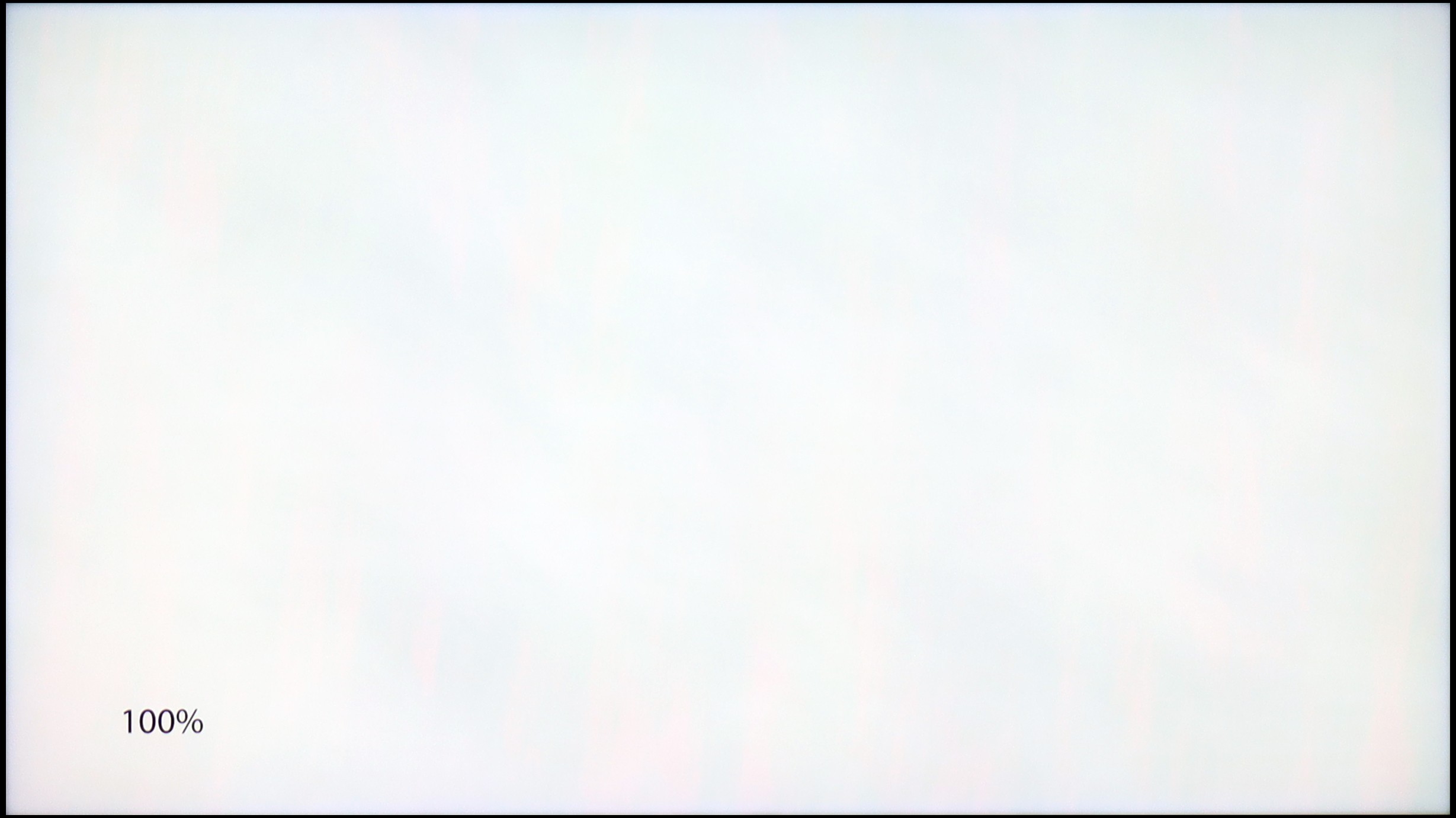
Samsung Neo QLED QN90D / QN92D
Hisense U8Q
TV features
7.7/10
9.4/10
- HDMI inputs0 x HDMI 2.0, 4 x HDMI 2.1 48Gbps0 x HDMI 2.0, 3 x HDMI 2.1 48Gbps
- Other inputsToslink (Optical audio), RCA (Chinch)
- OutputsToslink (Optical audio), eARC (HDMI), ARC (HDMI)eARC (HDMI), ARC (HDMI), Mini-Jack (Headphones)
- Network InterfacesWi-Fi 2.4GHz, Wi-Fi 5GHz, Ethernet (LAN) 100MbpsWi-Fi 2.4GHz, Wi-Fi 5GHz, Ethernet (LAN) 100Mbps
- TV receptionDVB-T, DVB-T2, DVB-S, DVB-S2, DVB-CDVB-T, DVB-T2, DVB-S, DVB-S2, DVB-C
Classic features:
- Recording to USB (terrestrial TV)
- Recording programming
- Picture in Picture (PiP)
- RF remote control (no need to aim at the screen)
- Backlit remote control
- Teletext
- Audio only mode
- Possibility to connect Bluetooth headphones to the TV
- Possibility to simultaneously use Bluetooth headphones and the TV speaker
Smart features:
- AirPlay
- Screen mirroring (Windows Miracast)
- Wyszukiwanie głosowe
- Voice search in native language
- Ability to connect a keyboard and mouse


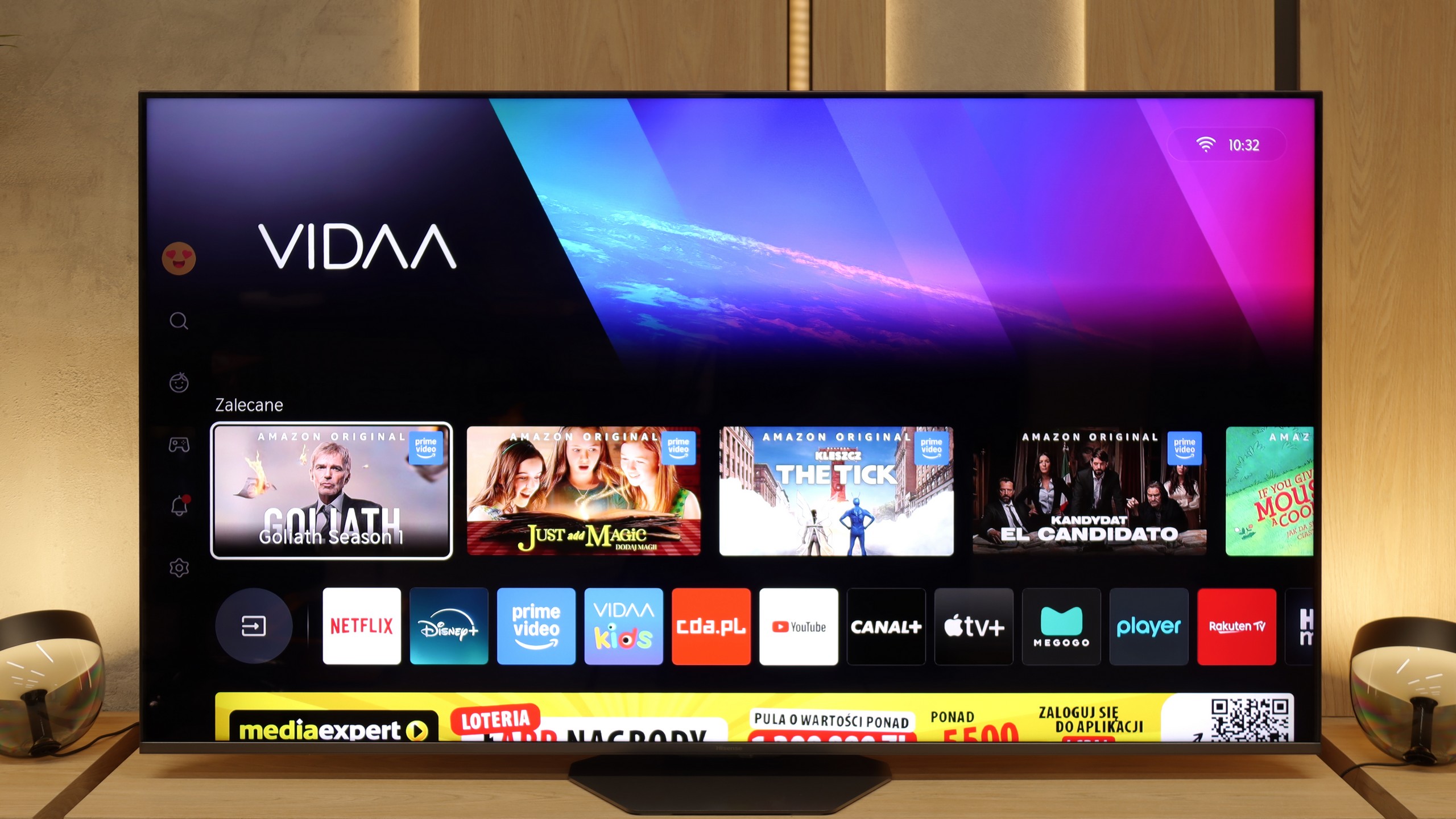
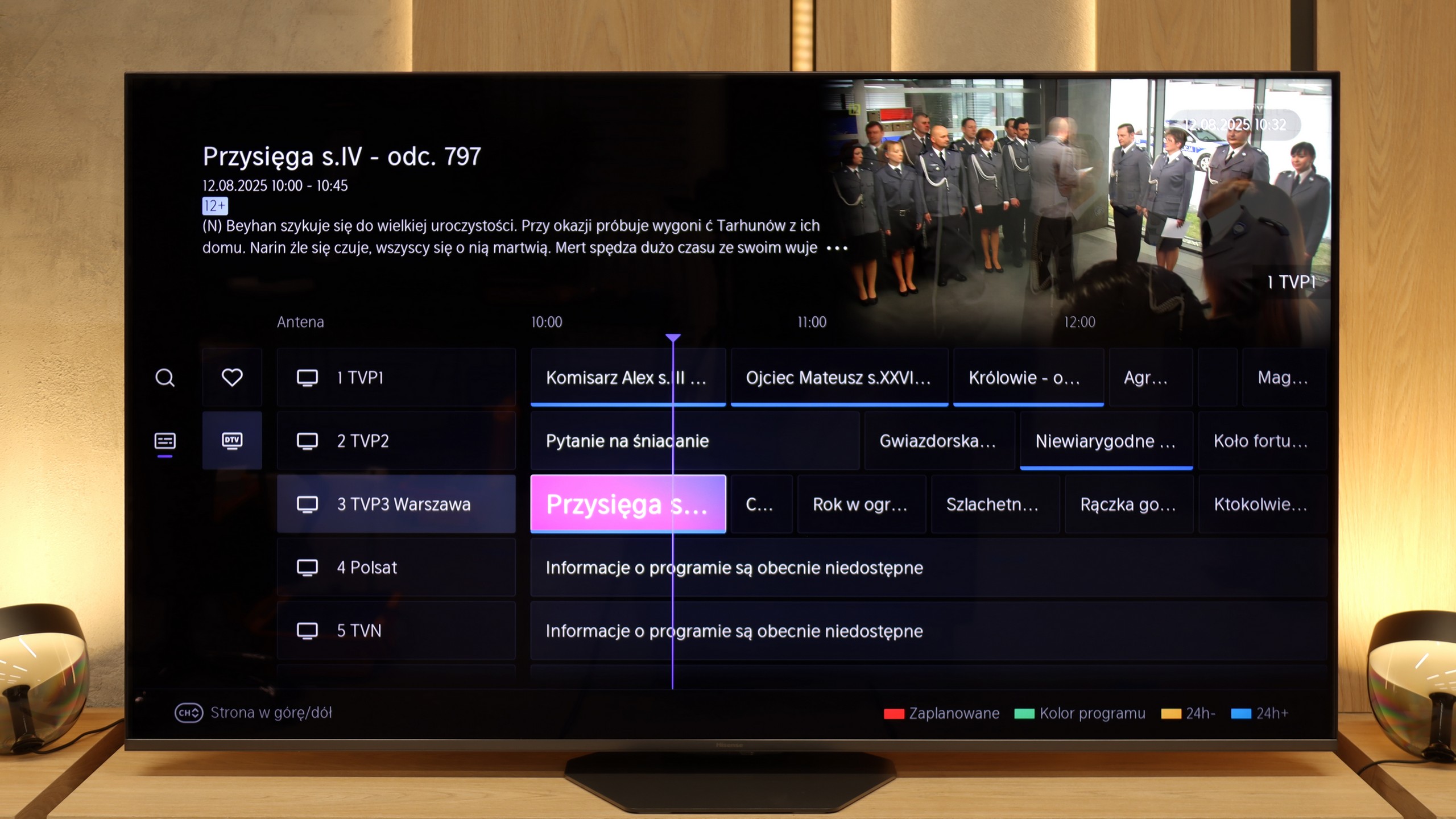
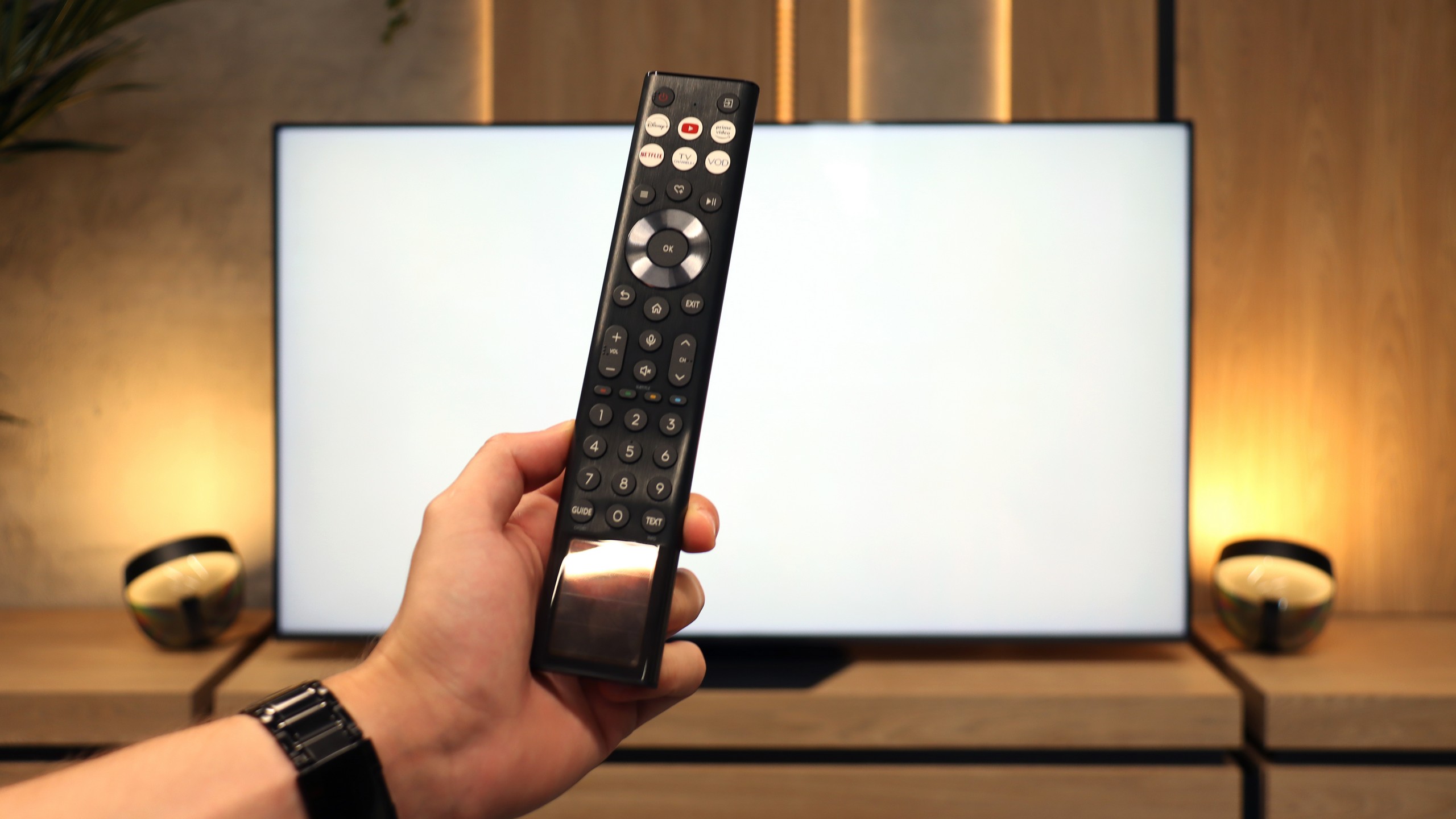
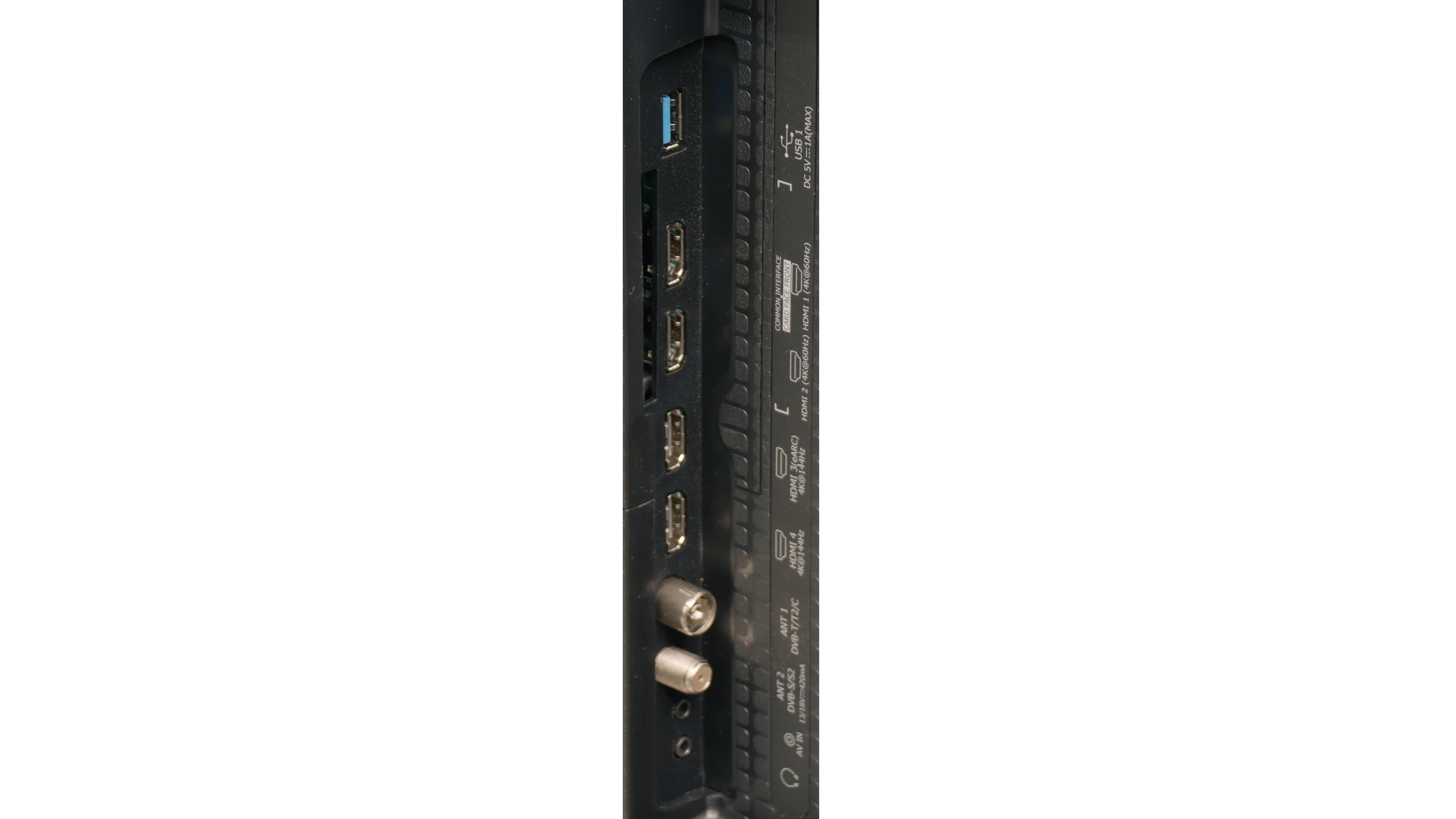
The Samsung QN92D television stands out with its modern Tizen operating system, which offers users an intuitive and visually pleasing environment. Tizen ensures smooth and quick browsing of applications, significantly enhancing the comfort of using the television. With its extensive ecosystem, users can easily connect the QN92D to other devices. The television supports numerous features that facilitate everyday use, such as controlling set-top boxes with the remote, eliminating the need for multiple remotes. Thanks to the AirPlay feature, Apple device users can seamlessly stream media from their iPhone. Additionally, there is a remote PC function that allows users to utilise their computer on a large screen, as well as the Office 365 application, making the QN92D an ideal solution for both work and entertainment.
Furthermore, like many Samsung televisions, the QN92D offers an Ambient Mode feature that allows users to customise the appearance of the television to blend with the surroundings. Users can display a variety of images or information, making the television an elegant part of interior decor even when not in use. Speaking of decor, it is certainly worth mentioning the device's appearance. It is truly very slim, around 2cm at its thickest point, which is impressive. The metal frame undoubtedly gives the impression of a premium device, and the stand included in the package is sturdy.
However, for those using traditional television, the QN92D may prove to be somewhat disappointing, as the Polish market lacks the feature for recording television programmes. Nevertheless, the television offers a PiP (Picture-in-Picture) function that allows simultaneous viewing of two programmes at the same time. The Samsung QN92D is a richly functional television that meets the needs of both gaming enthusiasts and multimedia users, while also aesthetically fitting into modern interiors.
Classic Features
The Hisense U8Q runs on the VIDAA system, which can still be considered relatively new in the European market, but it must be admitted – the manufacturer has a lot to offer here. We find classic features that are still useful to many people: recording to USB, a clear EPG guide, and the ability to connect wired headphones, which will be especially appreciated by seniors. A nice addition is the presence of an audio jack – a connector that is slowly disappearing completely from televisions, yet here it has been retained.
USB-C in the Television!
A new feature in the U8Q is the USB-C port with DisplayPort support. This is an unconventional but very practical solution – thanks to it, you can connect a laptop or phone with one cable, even if these devices do not have an HDMI output.
Smart Features: VIDAA
When it comes to smart features, VIDAA works efficiently. The interface is fast, applications open without significant delays, and network functions – such as screen mirroring or AirPlay – work very well. Of course, there are minor shortcomings, but these are more details than real problems. The Achilles' heel remains the somewhat limited application library. However, it is worth remembering that the list of available programs can change from day to day – some disappear, while others appear, so the situation may improve.
Playing files from USB
9.1/10
8.3/10
Supported photo formats:
Maximum photo resolution:

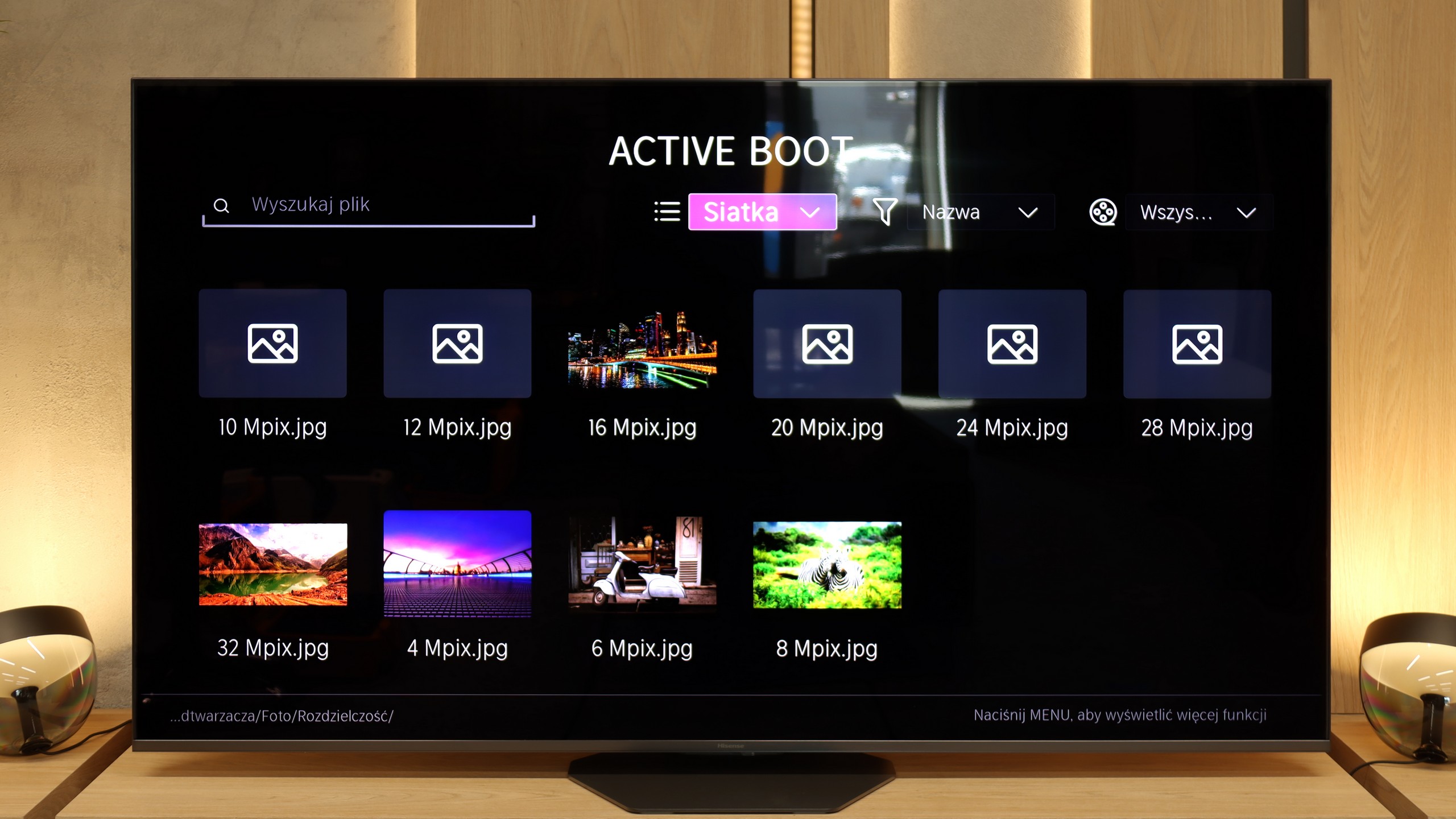
The built-in player in QN90D should satisfy a large portion of users. It will easily play most popular video and audio formats. However, more demanding users may notice some shortcomings – it is not possible to play photos in HEIC format, popular on Apple devices, as well as a few other, less widespread photo formats.
The built-in media player in the Hisense U8Q will be more than sufficient for most people. The television opens popular video and audio formats and also handles photos. However, there is a small caveat – not all photo resolutions are supported. Therefore, if we have photographs saved in a very high number of megapixels, they may simply not open. It is worth keeping this in mind to avoid unpleasant surprises during the family photo presentation.
Apps
8.7/10
7.7/10














































Sound
6.9/10
7.8/10
- Maximum volume-88dB
- Dolby Digital Plus 7.1
- Dolby True HD 7.1
- Dolby Atmos in Dolby Digital Plus (JOC)
- Dolby Atmos in Dolby True HD
- DTS:X in DTS-HD MA
- DTS-HD Master Audio
The television is equipped similarly to the QN95 with a 4.2.2 speaker system with a total power of 70W (the exception here is the 50' variant with a 2.2 layout and the 43' with a 2.0 layout). Despite its very slim casing, the television delivers loud and clear sound, and the overall balance is good. We deducted points as standard, just like with any other Samsung model, for the lack of DTS format support. It is also worth mentioning the proprietary Q-Symphony feature, which allows synchronising the television sound with Samsung's soundbar.
The Hisense U8Q performs really well in terms of sound. The sound quality is pleasant, with a slight bass and quite decent mid-tones, making it entirely sufficient for everyday viewing of films, series, or gaming.
It gets a bit worse when we crank the volume up to 100%. This is rather a rare scenario, but it’s worth mentioning. With very strong bass, the rear speakers start to work so intensely that the television can slightly 'shudder', and the sound transitions into an unpleasant, plastic echo. Therefore, it’s best to stay within the range of 70–80% volume – at that level, the U8Q sounds clear and pleasant, without any unwanted effects.
Acoustic Measurements
No acoustic data
88dBC (Max)
75dBC


